








New deputy director of communications in Missouri talks strategy for primary
By Chris King Of The St. Louis American
When 21st Ward Alderman Antonio French texted that he had accepted a position with the Hillary Clinton campaign as deputy director of communications in Missouri, we took this as a sign that Clinton seriously intends to mobilize the black vote in St. Louis and Missouri for the March 15 presidential primary – and immediately interviewed him about the campaign.
The American: How did this come about?
Alderman Antonio French: After a few calls picking my brain on a few issues, they asked me if I would be interested in formally coming on board. I said yes. I believe that this race is too important to just sit on the sidelines. Hillary Clinton is by far our best candidate to take on the Republicans in November and beyond. I want to make sure that Missouri is on the right side of history.
The American: Are there other African Americans with important positions on the Missouri campaign?
See FRENCH, A6
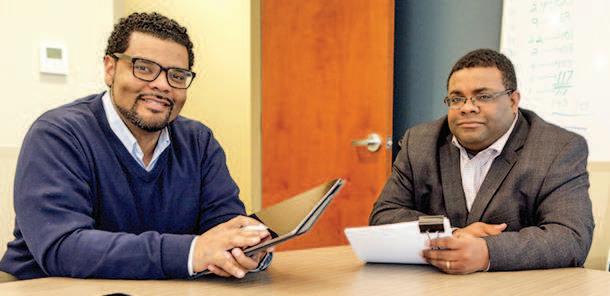

Carver Elementary School students Shanjauh Strickland, Alicia Nsoah, Katwan Davis, Tamara Brooks, and Kamari Sykes in Mrs. Ingrum’s 4th grade class do STEM work on their iPods.
Thousands of bottled water cases headed to victims of lead contamination
By
n “It was something that aligned perfectly with the national mission of Radio One.”
– Gary Gunter
On Saturday, February 20, in Ferguson – the city that sparked a global conversation about the broken relationship between the black community and law enforcement – hundreds of residents showed up to donate thousands of cases of water to Flint, Michigan. The predominately AfricanAmerican metropolitan area has been in the headlines in recent months as they face a contaminated water crisis due to short-sighted –

Kenny Hunter, a former resident of Flint, Michigan, helped to load bottled water onto a truck for delivery to Flint on Saturday, February 20. Project Compassion NFP, Radio One St. Louis, The Korey Johnson Foundation and Beyond Limits organized the water drive in Ferguson.
$6M facility will incorporate behavioral treatment for children and adolescents
Dwayne Butler’s expertise was in business and finance, not health care, when he took over as president and CEO of Betty Jean Kerr People’s Health Centers from his mother, the organization’s founder and namesake, in 2008. And he has brought the skill set of a businessman, as well as compassion, to bear upon the federally qualified health center, effecting a series of mergers. People’s is now a community conglomerate of six businesses touching areas such as housing and community development that impact its core mission of improving health outcomes. It has more than 500 employees and
Former Ferg-Flor superintendent to start as deputy super March 14
By
Kenya Vaughn Of The St. Louis American
“It feels great to be back home,” said Art McCoy, after he was introduced as the successor to Jennings Schools Superintendent Tiffany Anderson at a press conference on February 19. “My heart is drawn back home – to the community that has given so much to me and to show the same love to the students that I’ve been shown,” said McCoy, who previously spent 14 years in the district.
See McCOY, A6


Miami and Nashville police unions attempt a ‘Beycott’
Earlier this month the Miami Police Officers Union voted to boycott the upcoming Beyoncé concert in protest of her racially charged Super Bowl performance.
Nashville Police Officers Union also voted to join the “Beycott.”
In a statement released yesterday the Nashville Fraternal Order of Police president urged officers not to sign up for Beyoncé’s security detail because they claim anti-policing messages in her “Formation” music video.
The Nashville police chief has already addressed the controversy by stating that public safety as the top concern within the department – and that police security will be provided for the city’s leg of the Formation Tour.
North Carolina Police Officers Union voted unanimously not to participate in the boycott.
Was Kendrick the root of RiRi’s missing Grammy performance?
The New York Post’s Page Six is reporting that the real reason Rihanna backed out just 30 minutes before show time is because she got cold feet after watching Kendrick Lamar’s rehearsal.
“[Rihanna] felt like her performance couldn’t compare [to some of the other artists’],” a source told Page Six. “And she was trying to avoid the embarrassment because she knew it wasn’t the right comeback performance. She said, ‘I’m not doing this.’” Rihanna was scheduled to perform the slow ballad “Kiss It Better.”

for bankruptcy in July. He claims that he still makes millions, but that a flood of expensive lawsuits is killing him.
Since October, 50 Cent has posted several photographs on Instagram of him playing with cash. In one, he’s in bed surrounded by dozens of stacks of $100 bills – easily $50,000 in that picture alone.

In another, he stacks the Benjamins to spell out “B-R-O-K-E.”
In court on Thursday, the judge told the rapper’s attorney: “I’m concerned about allegations of nondisclosure or a lack of transparency in the case.”
Judge Nevins ordered the rapper to show up in court.
On Friday, the rapper’s legal team issued a statement saying he would show up “to make sure that all questions have been addressed.”
Do the Kardashians want Kim to cut Kanye loose?
Over the weekend there were rumors Kris Jenner was terrified son-in-law Kanye West was ruining the family brand.
Sunday morning Khloe Kardashian posted a long and cryptic post about cutting toxic people out of your life even if you’re afraid of what the future holds or what others may think.

Instagram stunts send 50 Cent back to court
50 Cent is heading to court to explain why he’s declaring bankruptcy –


“Mr. Jackson has been forthcoming and transparent with all creditors,” his lawyers assured.
This issue was brought up in court papers filed in January by headphone maker Sleek Audio, SunTrust Bank and 50 Cent’s ex-girlfriend Lastonia Leviston, three
“Let me remind you that we don’t need anybody’s approval to be happy in life. It’s on you to validate and accept your version of happiness. Don’t let anyone else decide for you,” Khloe writes. “But we do become victims and prisoners to the people we choose to surround ourselves with. We tend to become content, passive and blind within our relationships. Whether it be a family member, business partner, friend or a lover. Out of comfort and possibly fear – the unknown will leave you stuck in a bad situation and choosing comfort over your own happiness.”*

















By Mallory Daily Of St. Louis Public Radio
A student advocacy group wants Missouri’s merit-based scholarship program, Bright Flight, to be restructured. Advocates say it should take a back seat to need-based programs that are vital for low-income students seeking a college education.
“Bright Flight is supposed to be a statewide scholarship, but it’s more a where-did-you-go-to-high-school scholarship, because we can almost accurately predict whether or not a student would qualify for Bright Flight based on where they went to high school,” said Karissa Anderson, manager of advocacy and policy research for The Active Advocacy Coalition, an affiliate of St. Louis Graduates and The Scholarship Foundation of St. Louis
The report concludes that out of Missouri’s 800 high schools, students from 20 are awarded one-third of the program’s funding. To Anderson, this shows that Bright Flight is ignoring a much bigger issue in Missouri.
“There are more and more students that have financial need [in Missouri], so we really want to target the scarce funds that we do have into need-based programs, because we know those scholarships go to students that depend on those dollars,” said Anderson.
The coalition wants funds for Bright Flight be reallocated to Access Missouri, the state’s need-based scholarship program. According to its report, between 1991 and 2002, 71 percent of Bright Flight recipients came from a household with an annual income of more than $60,000. Anderson says Access Missouri

helps determine whether a student will be able to go to college at all, while Bright Flight simply provides incentives for a student to stay in-state.
The Bright Flight program was established in the 1980s by former state Rep. Ken Jacob to alleviate concerns about “brain drain.” The idea was that too many smart students were leaving the state for college, possibly never to return and contribute to Missouri’s workforce and economy.
The program currently serves more than 6,000 students who earned an ACT score among the state’s top 3 percent. This year’s minimum score to qualify is 31, which is dramatically higher than the state’s 21.5 score average. Students who qualify for the scholarship receive $3,000 in aid for up to 10 semesters.
Access Missouri, the state’s needbased financial aid program, serves more than 50,000 students a year with a minimum scholarship grant of $1,500.
Both programs were addressed in Gov. Jay Nixon’s proposed budget for 2017. He would increase the state’s three educational support programs by $7 million.
Bright Flight would receive an additional $500,000, Access Missouri would receive an additional $4 million, and the remaining $2.5 million would go to the A+ Scholarship program, which supports students in community college and vocational schools.
With Nixon’s proposed increases, Bright Flight funding would total $17.9 million; Access Missouri’s would total $71.3 million.
Even with this increase, the coalition is skeptical that Bright Flight gives financial aid to those that really need it.
“We know that Missouri wants to have 60 percent of its adult population to have a post-secondary degree by the year 2025,” said Amber Overton, the education policy intern at The Active Advocacy Coalition. “We just feel like that’s not possible if we’re awarding funding to students who don’t necessarily need that money.”
Student members of the coalition visited the Capitol on February 3 to distribute their report and discuss their recommendations with Missouri lawmakers.
“It’s important that the student

voices are heard, because often times they’re the voices that are left out of the process and the decision-making,” said Bryan Capers, director of the Teen Leadership Program at the Wyman Center. “So we’re making sure they’re here, they’re heard, and they’re active.”
Marlena Badden, an elementary education student at the University of Missouri-St. Louis, was among the students meeting with legislators. Her first visit was with Rep. Kevin Engler, R-Farmington. He listened, but held steadfast to the benefits of merit-based scholarships.
“I came from a not-wealthy family, and I was able to achieve merit-based scholarships,” said Engler. “My daughter, however, comes from a wealthy family, and now has $200,000 in student loans. I think it’s just unfair to her to be paying something like 7.8 percent interest on her loans, when she scored 30-something on the ACT.”
Engler said the state should continue to allow appropriate funding for merit-based programs and needbased programs. There’s no need for one to stifle the other. But the coalition claims that Bright Flight
Bright Flight scholars from Holt High School in Wentzville in 2013. An advocacy group is criticizing the program as favoring students from more affluent school districts and from private schools.
is encroaching upon the college opportunities of many different students around the state.
“[Bright Flight] is disproportionately awarded to students in metropolitan areas. It’s disproportionately awarded to white students. It’s disproportionately awarded to students in wealthier school districts, and also students in private schools,” said Overton.
To make the distribution of the program’s funds more equitable, the coalition is calling for the Department of Higher Education to change eligibility requirements.
The coalition is calling on Bright Flight administration to either throw out ACT measurements completely –“we know that ACT is correlated more with family wealth than anything,” said Overton – or to add grade point average and community service to their qualifying criteria.
Liz Coleman, director of Marketing and Communications for the Missouri Department of Higher Education, said adding factors to consider might be a possible next step for the program. But that’s up to legislators.
“There are a number of ways that students’ academic achievement could be assessed,” said Coleman. “The way the Bright Flight scholarship was established in state law was based on the ACT or SAT, so to change the criteria for earning the Bright Flight scholarship would take action from the Legislature. It wouldn’t be up to us.” The department said it has not verified the coalition’s data or taken an official position on the report.
Mallory Daily is an intern at the State Capitol Bureau for St. Louis Public Radio. Follow on Twitter: @ malreports Reprinted with permission from news.stlpublicradio.org.

Many of us are anxiously awaiting for the Missouri Supreme Court’s Municipal Court Division Working Group to release its recommended reforms, which are expected as early as March 1. The court has sweeping powers to force reforms in our municipal courts, the lowest level of justice in this country in every respect. In fragmented St. Louis County, with its 81 municipal courts, it’s predominantly lowincome and African-American citizens who suffer a litany of abuses, including taxation by citation and being jailed for inability to pay fines or post bail for non-violent offenses. As we argued last November, the Supreme Court should consolidate these greedy, exploitative courts and put St. Louis County on a path towards judicial equity.
Also, as we argued last March, the court must take jail off the table for municipal violations. Municipal courts should be forbidden to issue warrants for police to arrest anyone who has no pending criminal charges. Municipal governments must be forced to pursue noncriminal means of collecting payments for noncriminal violations. Municipal governments must no longer be allowed to use their jails to extort payments from people who are not able to pay fines and court fees.
As we are awaiting news from the working group, the ArchCity Defenders – one of the main voices for court reform in the St. Louis region, along with the legal clinics at Saint Louis University and Washington University – took its game to Washington, D.C. On Wednesday, February 24, ArchCity co-founder Thomas Harvey stood with four freshmen members of Congress and other legal advocates to introduce the “No Money Bail Act.” This bill would end the cash bail system in federal courts and incentivize states to do the same. States would have three years to abolish the cash bail system or they would lose federal funding by becoming ineligible for Edward Byrne Memorial Justice Assistance Grants from the Department of Justice. Missouri received nearly $6 million in such grants in 2014.
“What we see over and over is a person who cannot afford to pay bail will take a guilty plea simply to avoid jail,” Harvey said. “They know that if they are in jail for any length of time, they run the risk of losing their home, automobile, job and even their children.”
That is the story of the last 20 years for Qiana Williams, a St. Louis County resident who traveled with Harvey to Washington. “I’ve never had a misdemeanor charge; all muni cases,” she said. “But because of cash bail and the debtors’ prisons it creates, I’ve lost jobs, housing, and contact with my daughter Royal while I was
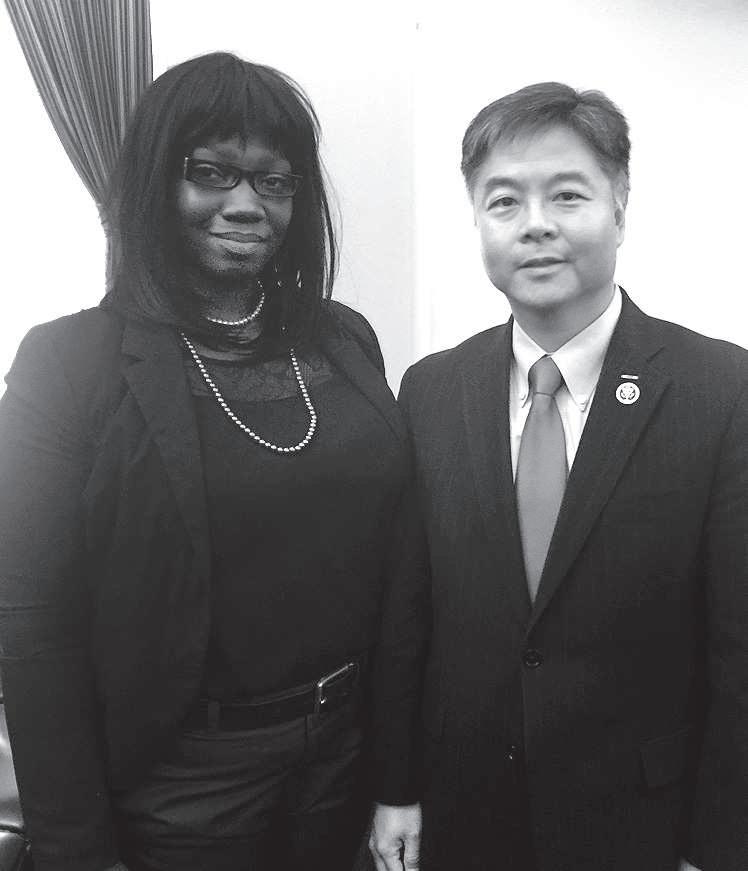
locked in a cage because of my inability to make a payment.”
The bill would leave untouched a judge’s prerogative to make a risk assessment and hold a criminal accused of a violent crime without bail. But it would eliminate money as a factor in whether or not a suspect who is not dangerous is released until their next court date – or left to languish in jail. “Cash is the least predictive factor in whether someone appears for their next court date anyway,” Harvey told The American “Studies have shown the most predictive factor is a simple text message reminding them they have a court date.”
The bill was introduced by U.S. Rep. Ted W. Lieu (D-California) and co-sponsored by U.S. Reps. Bonnie Watson Coleman (D-New Jersey), Brenda Lawrence (D-Michigan) and Ruben Gallego (D-Arizona). Though we commend them for their leadership, it is not a good sign for the future of the bill that they are all freshmen or, in this Congress, all Democrats. We urge the more seasoned members of Missouri’s congressional delegation to work with these young leaders on steering passage of this needed bill. As Harvey rightly said, “In this country, we do not put people in jail because they don’t have the money to buy their liberty. This bill is a huge step forward for those of us who have spent years fighting unjust incarceration in St. Louis.”
I See It - A Forum for Community Issues
By Tiffany Anderson Guest columnist
School boards and innovative school leadership can become the catalyst for change, or the dysfunction of such can be a barrier to change and school improvement. Innovative leaders can only improve schools to the degree in which the school board will allow them to lead. It takes the school board, teachers and leadership along with the entire school community working together. School boards serve as one of the greatest support systems ensuring high expectations with support are a constant. Continuous improvement is the product of an entire system working in harmony together, constantly reflecting on ways to get better. The journey of transformation in Jennings four years ago began with finding ways the board, school staff and the entire school community would work handin-hand. In Jennings, the relationships in the district four years ago between the board, educators and the community looked very different than they do now. New initiatives targeting community needs –such as the food pantry, the homeless shelter, the athletic complex, the school-based health clinic and the ongoing college initiatives – were quickly embraced by the board. Additionally, as a result of the academic initiatives supporting students and teachers, support was given to uplifting current district talent and a positive image was created that led to recruiting new talent, such as Dello Thedford, who is one of the district’s 2016 fine
arts Teachers of the Year. Recruiting Mr. Thedford led to further community supports for kids that included implementing dance, drama and expanding music. The district’s April 1 gala production of “Dream Girls,” which is open to the community, would not be possible without him. The school board is a key support that must work together to remove barriers for schools so the innovative ideas can truly become a reality. In St. Louis, districts that have improved significantly more than likely have a unified, committed board working together in the background as part of their volunteer service to the community.
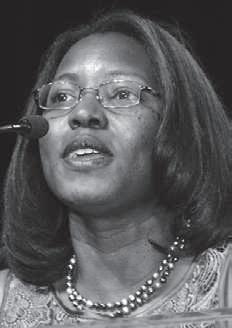
School Boards are truly to be commended. In Jennings, we recognize the importance of this, which is why, in addition to celebrating and highlights students and teachers, we began celebrating our school board four years ago through pictures on our web page, the placement of plaques with their names listed in areas with new initiatives, our district-wide yearbook, and by celebrating the board at events and through during school board appreciation week, which the district only began formally recognizing three years ago.
School improvement takes a joint effort between teachers, school district leaders, the community and a school board working together to provide the best possible opportunities for the community. When any one
By U.S. Rep. Wm. Lacy Clay and U.S. Rep. Emanuel Cleaver II Guest columnists
Over the last few days, we have witnessed a remarkable display of contempt for the U.S. Constitution by some of the loudest Republican voices who normally claim to be the high and mighty protectors of its original intent.
Article II, Section 2, Clause 2 of the U.S. Constitution states in-part: “The President shall nominate, and by and with the Advice and Consent of the Senate, shall appoint Ambassadors, other public Ministers and Councils, Judges of the Supreme Court, and all other Officers of the United States.”
Nowhere within the foundation document of our great democracy is there any mention of delaying such judicial nominations during election years or even during the final year of a particular administration. That is no doubt due to the absolute necessity to preserve the balance of powers which relies on a fully functioning Supreme Court that is capable of rendering majority decisions from a full bench.
According to the National Archives, the previous 43 presidents have submitted a total of 24 Supreme Court nominees within the final 10 months of their respective terms in office. In fact, 18 percent of all Supreme Court nominees were submitted later in a president’s term than President Obama’s
current tenure. That includes the remarkable Justice John Marshall, our nation’s longestserving chief justice, who was nominated by President Adams in 1801 after his defeat by Thomas Jefferson, just 43 days before the end of his term. So with 340 days left in office, President Obama has an abundance of history and precedent on his side.


Yet, as has too often been the case over the last seven years, when it comes to this particular president, the Senate majority leader and many of his colleagues in their “autoobstruction’ caucus are happy to apply a different standard to him. Although we were rarely in agreement with the late Justice Scalia, a remarkable jurist whom we truly respected, we are absolutely sure that he would have been appalled by such a complete abdication of the Senate’s constitutional responsibility to conduct fair hearings and then schedule an up or down vote on whomever the president nominates.
As President Obama said in his press conference
Race, property and education
Schools in Missouri are funded by property taxes, a revenue source directly related to property values.
of those groups are ineffective, schools struggle to succeed at high levels.
Districts that are highperforming across the nation tend to have a supportive, stable school board; committed, innovative educators and educational leaders; and a community prepared to partner provide wrap-around supports for students. Jennings has continued to demonstrate gains because of the collaborative effort and collective energy from all three groups working together, rather than against each other.
There will always be challenges facing a district, which may include a shortage of resources or crises impacting the community, but the strength in getting through the challenges effectively is determined by the strength of the board, educators and community working together. While in some schools, improvements are seen despite one of the areas being ineffective, overall systematic district improvement is most commonly viewed when all three areas are working in concert with each other.
Congratulations to the Jennings School Board who took the bold step to allow many educators and community members to partner in Jennings to work collectively to support district wide school improvement. Schools are the center of the community. We are all interconnected, and when we work together for the betterment of our communities anything is possible.
Tiffany Anderson, superintendent of Jennings School District, has accepted the position of superintendent of Topeka Public Schools.
In predominantly white suburban districts, this has proven to be a steady source of revenue. These districts are even able (and typically willing) to raise additional funds when needed for building projects and special initiatives. The system works. Right?
When these very same districts experience waves of white flight and red lining, both of which are happening even as we speak, the property values fall and school revenue falls with it. As black families move into a district in search of quality education, white families move out and take their dollars with them. A district once innovative and trendsetting now finds itself in a major budget crisis.
There are a host of districts in our metro area that have seen this tragic scenario. And in every single case it is the children who ultimately pay. To be sure, they get blamed and shamed and suspended at high rates and are still denied the privileges given when the student body was white. Because it is, we are told, just business.
There are some not-business decisions that are being made. And made by those of us on the sidelines, those of us who are white.
The most egregious is a decision to tie school funding to a revenue stream so directly connected to our racist instincts and practices. There is absolutely no reason that we need to do so. Some states have made significant gains using other funding systems. To insist on property tax funding is a choice and one very directly connected to preserving both race and class privilege. Our children, all of our children, deserve better.
Tragically our (white) unwillingness to see our own role in the defunding of public education leads us to place the blame on those left holding the now bankrupt systems. First we
in California on February 16: “We’ve almost gotten accustomed to how obstructionist the Senate has become when it comes to nominations. The fact that it’s that hard, that we’re even discussing this, is a measure of how the venom and rancor in Washington have prevented us from getting things done. This would be a good moment to rise above that.”
We strongly agree, and we urge Senate Republicans to take a step back from the abyss of obstruction and consider your own legacy as lawmakers. It is certainly understandable that it might be easier in the short-term to sacrifice your constitutional duty as a burnt offering to the hateful, irresponsible vitriol that is projected daily by your party’s presidential primary candidates. But in the long run, Donald Trump, Ted Cruz, Marco Rubio and the other candidates will not take the blame for this fundamental failure. You will. The Constitution simply does not provide you with an option to call a judicial timeout because the composition of your own team scares you. If the Senate fails to do its duty, the voters will remember that in November, and history will record that the Republican majority lacked the courage to do your sworn duty. We urge Missouri’s U.S. Senators to do what the Constitution requires. Clay (D-St. Louis) represents Missouri’s 1st Congressional District, and Cleaver (D-Kansas City) represents Missouri’s 5th Congressional District.
take the money, then we blame those who remain for being broke. Instead we should be following the money trail and demanding equity.
Katherine HawkerSelf Via email
Hard-nosed in Ferguson
I was surprised by your editorial regarding the decision of the Ferguson City Council. Generally I find your publication to be hard-nosed and pragmatic and willing to look beneath the surface to understand what is really going on. The situation in Ferguson begs for that hard-nosed approach.
The truth is that any agreement with the DOJ will be paid by the mostly African-American residents of Ferguson. I understand some people think the cost should be
as high as possible, as a penalty for a history of racism. But we have the strange situation that the people arguing for the greatest possible financial penalty seem to forget the that people that will pay most of that penalty are the African Americans that live in Ferguson. The DOJ seems to have forgotten this as well. Unconstitutional policing ended a year and a half ago. We don’t give excessive tickets, don’t do stop and frisk and don’t keep people from filming our officers. Wesley Bell and Ella Jones haven’t gotten the credit they deserve for helping to move Ferguson forward. And now, in this strange world we live in, they are being attacked for protecting the financial interests of the mostly African-American residents that they represent. Blake Ashby Ferguson




Alderman Sam Moore of the 4th Ward received a $10,000 donation from Al Colbert, the promoter of the Valentine’s Day Jam, to help with restoration of playgrounds in the community.
Forest Park Forever is accepting applications for its Forest Park Forever Artist in Residence Program.
There will be up to three residencies available for regional artists of all disciplines and backgrounds — from poets and choreographers to painters and photographers and beyond. Each artist will receive a $3,000 stipend from Forest Park Forever to produce their work or series of works, plus a budget to create a public event at the end of their residency. None of the artwork will be permanently displayed in Forest Park. Artists will be expected to work on-site in Forest Park for 10 hours per week for three weeks and are encouraged to collaborate and learn from the horticulturists, gardeners and other professionals from Forest Park Forever and the city. Residencies will take place between May and September 2016. For more information about the application process, visit forestparkforever.org/artists.

By Esther Haywood Guest columnist
Raise Your Hand for Kids, a child advocacy organization, is seeking to put the Early Childhood Health and Education Amendment on the November 2016 ballot. The initiative increases investments in early childhood health and education by $300 million per year through a 60-cent increase in Missouri’s cigarette tax. Missouri’s current cigarette tax is the lowest in the nation at 17 cents per pack putting Missouri at 950 percent below the national average.
The initiative funds crucial programs for children ages birth through five – the most critical ages in a child’s development – including preventative health care, health and developmental screenings and programs to treat childhood obesity and infant mortality. It also expands home visitation programs and equips communities with the tools and resources necessary to improve quality of and increase access to preschool. And it does this while making accountability a priority.

The Ferguson Commission and Washington University’s For the Sake of All initiative recently crafted remedies to improve African Americans’ long-term economic and social foundation in St. Louis. They both concluded that investments in early childhood health and education are not only critical for our children but also for the long-term prosperity of our community.
We must heed these calls. We must turn words into action. We must take concrete steps to fund these vital programs. And we must ensure that all of our children have the opportunity to thrive and live to their fullest potential.
n Early childhood health and education are not only critical for our children but also for the longterm prosperity of our community.
Please join the St. Louis County NAACP in supporting this measure. Here are a few things you can do. Petitioners are currently in the St. Louis area collecting the signatures necessary to get this issue on the November ballot. If you are asked to sign a petition for early childhood health and education, please add your name to this growing list of citizens eager to help our children.
We must bring this issue to the forefront of our community. Help us communicate the importance of this issue to your pastor, your civic leaders and your elected officials by talking about this early childhood initiative at your next church service, neighborhood meeting or town hall.
Many of our children have long been denied the education and health services that we know are fundamental to their success. We must take the necessary steps to provide better outcomes for our youth. Raise Your Hand for Kids, and the Early Childhood Health and Education Amendment will help us make these strides.
Esther Haywood is president of the St. Louis County NAACP and a former Missouri state representative.

Continued from A1
McCoy’s appointment comes less than 30 days after Anderson announced her departure from Jennings to become the first African-American female superintendent of Topeka Public Schools. McCoy will serve as the deputy superintendent beginning March 14 and step in to replace Anderson on July 1.
Both McCoy and the Jennings Board of Education said that Anderson’s shoes will be tough to fill.
“Dr. Anderson has set the bar high, and we knew that it was critical to find a transitional leader who has our mission that every student can succeed in the school district,” said Jennings Board of Education President Rev. Harold Austin.
The Jennings school board opted out of an intense national search in their appointment of McCoy.
“We didn’t want to spend $20,000 for a search firm to find a superintendent when one was in our backyard,” said Austin.
“We knew what we wanted – and Dr. McCoy was what we wanted. His passion coupled with his experience and knowledge will ensure that our schools will continue to foster academic success.” Previously, McCoy succeeded Anderson as an assistant superintendent at the Rockwood School Districts and brought some of the programs and initiatives she implemented to FergusonFlorissant during his tenure as superintendent, he said. He left Ferguson-Florissant
Continued from A1
and, some allege, criminal – decisions made by state government officials.

in 2014 after being placed on administrative leave by the school board. He said at the news conference that he and that board have since resolved the differences – which were never made public. Jennings High School
Pubic response to the drive –a collaborative effort by Project Compassion NFP, Radio One St. Louis, The Korey Johnson Foundation and Beyond Limits – was overwhelming. “There has been a negative cloud over the St. Louis
freshman Rayvaan Lowe admitted she became emotional when she learned Jennings would lose Anderson to Topeka.
“We’ve been with Dr. Anderson for so long, and she made us all feel so
region for the last couple of years,” said Chesley Waddell, promotions director for Radio One St. Louis. “It felt so great to see that there is good here and people care about their neighbors – and people in a state that many have never

comfortable,” Lowe said. The moment she learned McCoy would replace Anderson, Lowe did her research on him.
“I read that he had good relationships with a lot of his students and the community,
been to.”
Just feet from where protestors were once arrested, the parking lot of the shopping center that houses Milano’s Menswear looked like a bottled water warehouse. A truck and a flatbed were full by early afternoon. Cases upon cases were stacked in sections.
Cars lined up to make water deposits.
“Two things went through my head,” said Rachel Jackson of Belleville-based Project Compassion, who spearheaded the drive. “The first was: oh my God, where are we going to put all of this water?’
The second was: sometimes all it takes is one person getting started for others to step up.”
so I wasn’t really heartbroken anymore,” Lowe said. “I’m happy for Dr. Anderson. She’s going somewhere where she’s going to be the first AfricanAmerican superintendent – where the segregation of schools first ended.”
of Radio One St. Louis.
“Although Flint is outside of the St. Louis, it’s still part of our African-American community.”
Jackson reached out to Korey Johnson, and the group set out with the initial goal of 1,000 cases of water to fill a truck that Beyond Limits volunteered to provide.
n “It was truly an outpouring of love.”
– Rachel Jackson, Project Compassion NFP
Jackson posted her idea for the water drive on LinkedIn, and Waddell reached out on behalf of Radio One St. Louis.
“It was something that aligned perfectly with the national mission of Radio One, which is serving and giving back to the community,” said Gary Gunter, vice president
Continued from A1
Who are they, what positions?
Antonio French: Ken Franklin is serving as political director leading outreach efforts across the state.
The American: What strategies do you have in mind to mobilize the black vote in St. Louis and Missouri?
Antonio French: What we know is that African Americans overwhelmingly support Hillary Clinton. We’ve known Hillary for decades. We know she’s with us on important issues. We know that she’s a fighter. Our challenge, as in most elections, is to make sure that our people show up to the polls to make sure their voices are heard. We will spend the next few weeks before the March 15 primary election reminding people: 1) there is an election and 2) this is an important election because the stakes are so high. We can’t afford to send anyone short of our very best into the November election, and Hillary Clinton is our best. This is no time to be playing around.
n “We didn’t want to spend $20,000 for a search firm to find a superintendent when one was in our backyard.”
– Jennings Board of Education President Rev. Harold Austin
She is referring to Brown v. Board of Education of Topeka, the 1954 landmark United States Supreme Court case in which the court declared state laws establishing separate public schools for black and white students to be unconstitutional.
McCoy spoke of moving the district towards accreditation with distinction. He also mentioned continuing an accelerated curriculum two to three levels above grade level, making sure dual credit options – for AA certification after high school and an aligned job placement prior to high school graduation – and making sure students have corporate relationships.
McCoy expressed his desire to use his relationships and resources to make sure students ‘”who look like you and me” have access to opportunities and are prepared for higher learning at some of the best institutions in the world.
“There was no hesitation to come back home and serve the community I grew up in,” McCoy said. “I plan to give my heart, my talent and my labor to the entire team, to the entire board, staff and stakeholders to best serve the students.”
today to give, not get.”
The on-air personality was pressed into duty helping unload water from cars and onto one of the trucks.
“No one complained or got upset because they had to move the water,” Waddell said. “Everybody was out there doing it.”
Radio One said that more than 7,000 cases were received, but Johnson and Jackson said it was more like 10,000.
n “People came here today to give, not get.”
– A-Plus
“St. Louis citizens who listen to 95.5 and 104.1, they showed up and showed out,” Johnson said.
Jackson said that Wal-Mart and Sam’s directly across from the drive sold out of bottled water.
“We had some giveaways, but this was not incentivebased,” said A-Plus, afternoon personality for Radio One St. Louis’ hip-hop station Hot 104.1 FM. “People came here
The American: Is the campaign planning a ground campaign in Missouri? If so, what scope and scale?
Antonio French: There has been a grassroots effort supporting Hillary Clinton for president for months in Missouri. In the weeks leading up to the March 15 primary, we’ll have hundreds of volunteers knocking on doors, talking to neighbors, connecting and organizing, all pushing to make sure we have a strong turnout on Election Day.
The American: In early primaries, Sanders voters are skewing young. Do you have strategies in mind for swaying younger voters?
Antonio French: This image that the Sanders campaign has pushed that he is the candidate of choice for young people only holds up if his definition of “young people” ignores young black people. In every contest so far, young black people have chosen Hillary Clinton. I am confident that will be the case here Missouri too. Why? Because we know Hillary. We know how important this election is. We know that our issues require
In addition to the cohesiveness of everyone working together, Jackson said she was touched by the personalized notes some taped to cases of water they donated.
“They said things like ‘We love you Flint, or ‘We’re praying for you Flint,” Jackson said.
“It was truly an outpouring of love.”
The work is not over. They still need people to help prepare and pack the water. Volunteers are needed beginning at 8 a.m. this Saturday, February 27 at the Dellwood Recreation Center, 10266 West Florissant Ave. Visit www. koreyjohnsonfoundation.com for more information.
real solutions, not empty campaign promises.
The American: Ferguson mobilized young black people in a way that we have never seen before in this region. To what extent is that energy still in play? What strategies do you have to harness it for Clinton?
Antonio French: I think it’s undeniable that the Black Lives Matter Movement, which really rose to global prominence here in St. Louis in 2014, has pushed both Democratic campaigns to address our issues on a scale we have not seen in this country in decades. Hillary Clinton has talked about identifying and dismantling systemic racism. She has talked about the violence plaguing our communities –from unaccountable police departments like in Ferguson, but also from criminals killing our youth at high rates. She believes black lives do matter. She says the names of the victims. She gets it. And she’s our best chance for continuing the progress on these issues. That’s the case we’ll be making in the weeks before March 15 and all the way through to the November election. This election is too important.
Continued from A1
treats more than 45,000 unique patients a year.
The next phase of People’s growth opens 1 p.m. Monday, February 29 when it breaks ground on a new $6 million children and adolescent health facility at 5647 Delmar Blvd. The facility will house three floors to accommodate 20,000 square feet of clinical and counseling support programming.
“Once it’s completed, we will have the necessary and critical medical and behavioral health resources in the same campus,” Butler told The American. “We know that proximity plays a part in coordinated care.”
The rationale is very simple – the easier it is for patients to receive the care they need, the more likely they actually will get treated. This is especially critical when the treatment is for behavioral issues, which frequently are stigmatized.
“If we see a child in the primary care exam room and recognize behavioral health issues, we will be able to bring needed behavioral health resources into the exam room during the child’s primary care visit to assess and treat during the same visit. This unique ability, due to the diversity of services we are able to provide, increases behavioral health compliance,” Butler said.
“Simply put, if we send the child across town to receive behavioral health services, they may show up 30 percent of the time. If we send them down the hall in the same building, that percentage goes up substantially. However, if we bring in a behavioral health provider into the primary care exam room, we achieve an almost 100 percent show rate.”
Opening a facility that will address the behavioral health needs of youth builds upon a previous merger. On January 1, 2010, People’s merged with a community-based behavioral health provider, the Amanda Luckett Murphy Hopewell

Center. The new children’s health facility was designed with the input of local psychiatrists and other mental health professionals with a goal of creating an environment that addresses the mental health needs of underserved urban youth. Butler said having a pristine new facility where youth can receive behavioral health treatment will help to address the stigma that keeps many people from receiving the behavioral treatment they need.
“We must show our children that we no longer need to
n “With this new amazing facility, we want families to feel good about treating the problems they see in their children every day.”
– Dwayne Butler
whisper about depression, anxiety, anger,” Butler said.
“With this new amazing facility, we want families to feel good about treating the problems they see in their children every day.”

The facility was designed by KAI Design & Build and will be built by Hankins Construction Company, with Raineri Construction handling the parking. The center will be constructed east of the Social
Security Administration Center on property owned by People’s, with an anticipated completion date of February 2017.
The ground-breaking ceremony will be held at 5701 Delmar Blvd., with a reception immediately following. U.S. Rep. Wm. Lacy Clay and St. Louis Mayor Francis G. Slay are scheduled to speak, reflective of support People’s received for the project from the federal government (the U.S. Department of Housing and Urban Development) and the City of St. Louis (the Community Development
Administration, Land Revitalization Authority, Land Clearance for Redevelopment Authority and Board of Public Service).
Butler understands that more thorough treatment of behavioral health issues will impact more people than those who receive the treatment they need. “We hope to intervene in adolescent behavioral health issues,” he said, “before they become news events.”
For more information, visit phchopeforkids.com.


Zeta Sigma Chapter of Sigma Gamma Rho Sorority, Inc. will host the 76th Central Region Conference, March 3-6 at the Marriott St. Louis Grand Hotel in downtown St. Louis. More than 1,000 members from 13 states and four countries, plus families, guests and friends, are expected to
attend. The 2016 conference, themed “The Unbreakable Power of Vision, Voice and Virtue,” will be directed by the 21st Central Region Syntaktes, Tiffany D. Hightower.
Along with the deliberations of the conference will be several community service and public events. On Friday,
March 4 at 7:30 p.m., the conference will hold a Public Meeting at The America’s Center Convention Complex, where local leaders who demonstrate the year’s theme will be recognized. On Saturday morning, two public events will be held at the conference hotel. Beginning
at 10 a.m. in the Landmark Ballroom will be a Health & Wellness Panel focusing on minority women health issues. Continuing the commitment to empower the citizens of St. Louis through conference activities will be a Wealth Fair at 11 a.m. in the Majestic Foyer.

Sigma Gamma Rho was established in 1922 as an international, nonprofit, service organization. Headquartered in North Carolina, Sigma Gamma Rho is comprised of more than 90,000 professional women and college students, committed to the slogan of “Greater Service, Greater Progress” in communities around the world. Its mission is to enhance the quality of life through public service, leadership development, and education of the youth. For more information on the sorority, national programs and corporate partnerships, visit www.sgrho1922.org.
The Missouri Military Preparedness and Enhancement Commission unanimously passed a resolution supporting the City of St. Louis as the best location for the new National Geospatial-Intelligence Agency (NGA) West facility. The commission is charged with supporting Missouri’s $15 billion defense-based economy. The NGA is in the process of selecting the location for its new Western Headquarters and has selected as finalists four locations: North St. Louis, two in South St. Louis County, and one in southern Illinois, near Scott Air Force Base.
“The City of St. Louis location is superior in nearly every way,” said commission Chair Mike Dunbar of Waynesville. “Most importantly, it is the best location to help the NGA with its military and national security mission, which is why we stand strongly in support of its selection as the Agency’s next western headquarters.”
n “The City of St. Louis location is superior in nearly every way.”
- Mike Dunbar
The commission cited a number of factors in favor of the North St. Louis site, including proximity to the St. Louis airport, shortest commute time for NGA’s existing workforce, and close proximity to national leading educational, technology, and healthcare institutions.
“For over 70 years the City of St. Louis has partnered with and supported the NGA and its mission,” Dunbar said. “With this proud history and a visionary plan for the future, St. Louis is best positioned to help NGA continue to grow and excel for the next 70 years and beyond.”
The Missouri Senate has also passed a resolution of support for North St. Louis as the best location for NGA West. In addition to Dunbar, commissioners appointed by Gov. Jay Nixon include Robert Hagedom, J. Stanton Thompson, Lt. Colonel Michael R. Sloan and Robert G. Russell. It also includes three members of the Missouri General Assembly – state Senator Will Kraus, state Senator Jason Holsman and state Representative Charlie Davis – with one state representative seat vacant. Its ex-officio members are General Larry Kay, executive director of the Missouri Veterans Commission, and Mike Downing, director of the Missouri Department of Economic Development.

The cost to the City of Ferguson for rejecting the consent decree negotiated with the Department of Justice was made clear at the first City Council meeting since the DOJ sued the city over civil rights and constitutional violations described in its March 2015 report.
First order of business on February 23, the council swore in Laverne Mitchom to succeed the late Brian Fletcher, giving the majorityblack city its first-ever majority-black City Council. This might have been a cause for celebration rather than a positive prelude to a protest.
Once the protest ensued – with chants of “no consent decree, bankruptcy!” and “no justice, no peace!” – the council proceeded to pass several sensible municipal reform measures, as reported by St. Louis Public Radio.
They include: eliminating bonds for people charged with municipal violations, except in certain circumstances; allowing the municipal judge to sentence a defendant to probation for municipal ordinance violations; eliminating the requirement that people who have minor traffic violations dismissed have to pay court costs; setting up payment plans or alternative sentences such as community service for indigent defendants; and preventing a municipal judge in Ferguson from serving as a prosecutor or city attorney in any other city.
However belated, these reforms might have been celebrated, rather than drowned out by a highly theatrical protest. One protestor wore a red clown nose to deride the council members as clowns.
Others dressed in black with berets, after the fashion of the

Black Panthers (and Beyonce channeling the Panthers).
However, the council’s new racially representative majority and its municipal reforms were lost in citizen anger that the city would not submit to federal oversight to verify that it implements a set of more thorough and sweeping reforms, especially of the Ferguson Police Department, spelled out in the consent decree.
Ferguson officials claim the city already has made many of the reforms called for in the consent decree, completely missing the essential point that the DOJ does not trust Ferguson’s self-report on its progress and insists on an
independent monitor to oversee compliance over a five-year period.
Ferguson officials also claim that fighting the DOJ in court would be less disastrously expensive than implementing the consent decree. Other media have questioned Ferguson’s estimates, compared to consent decrees executed in other cities of similar size. And, as several residents reminded the council, they did not account for citizen anger over their actions possibly costing the city a tax increase initiative.
“I implore you to go on hands and knees to the DOJ and beg them to allow you to sign the consent decree,”

Ferguson resident Debra
told them, according to St. Louis Public Radio.
“Because if you don’t, I guarantee you that at that April election, if we have to hire buses, cabs, Uber, if we have to go pick people up in our own vehicles, we will go pick up those no votes to make sure that you don’t get one damn dime in tax increases.”
About that problematic police department: The council tabled a measure that would have created a nine-member civilian review board for the city’s police department, saying the plan “still needed to be refined,” according to St. Louis Public Radio.
You didn’t pay for it
St. Louis taxpayers owe Elliott Davis for snatching some of their money out of the greedy clutches of St. Louis License Collector Mavis Thompson. State Rep. Penny Hubbard proposed a bill that would have hiked Thompson’s salary from $80,000 a year to $125,000, a whopping 56 percent pay hike. After Davis’ “You Paid For It” report, Hubbard withdrew the bill. Thompson’s spokesman then sent the gadfly broadcast journalist a statement saying, “In light of the withdrawal of house bill 2469, the subject matter of your inquiry is moot.”
Filing opens for August primary
February 23 was the first day of filing for the August 2, 2016 primary election. Candidates have until March 29 to file for the primary races. As of press time, there were nine candidates for U.S. senator, six names each for governor and lieutenant governor and four each for secretary of state, state treasurer and attorney general. Twenty three people put in their names for U.S. representative, 28 for state senator and 235 state representative.
All candidates are listed in
the order they will appear on the ballot.
The Democratic candidates for U.S. Senator are Chief Wana Dubie of Salem, Cori Bush of Florissant and Jason Kander of Columbia. The Republican candidates are Roy Blunt of Springfield, Kristi Nichols of Independence, Bernie Mowinski of Sunrise Beach and Christopher Batsche of Cassville. The Libertarian candidate is Jonathan Dine of Kansas City, and the Constitution candidate is Fred Ryman of Jefferson City.
The Democratic candidates for governor are Leonard Joseph Steinman II and Chris Koster, both of Jefferson City. Gubernatorial Republican candidates are Catherine Hanaway Eric Greitens, John Brunner – all of St. Louis – and Peter Kinder of Jefferson City.
The Democratic candidates for lieutenant governor are Winston Apple of Independence, and Russ Carnahan and Tommie Pierson Sr. of St. Louis. The Republican candidates are Arnie C. Dienoff of O’Fallon, Bev Randles of Kansas City and Mike Parson of Bolivar.
For secretary of state, the Democratic candidates are Bill Clinton Young of Kansas City and Robin Smith of St. Louis.
Republican candidates are Will Kraus of Lees Summit and John (Jay) Ashcroft of St. Louis.
For state treasurer, the Democratic candidates are Pat Contreras of Kansas City and Judy Baker of Columbia.
Republican candidates are Eric Schmitt of St. Louis and Dan W. Brown of Rolla.
For attorney general, Democratic candidates are Jake Zimmerman of St. Louis and Teresa Hensley of Raymore. Republican candidates are Josh Hawley and Kurt Schaefer, both of Columbia.
Here are the names for the U.S. Representative candidates in the St. Louis area. For U.S. Representative of District 1, the Democratic candidates are William Haas, Maria Chappelle-Nadal and Lacy Clay. Republican candidates are Steven Bailey and Paul Berry III, and the Libertarian

William B. Pollard, Jr., a veteran educator who spent more than 25 years in the St. Louis Public Schools and whose work impacted the lives of children in several U.S. cities, died on February 3, 2016, in Washington, DC. He was 103 years old.
Born July 23, 1912 in his mother’s hometown, Abbeville, South Carolina, he grew up in Evanston, Illinois. He earned an undergraduate degree from Prairie View A and M University near Houston, Texas, and graduate degrees from the University of Michigan and Northwestern University.
In 1941, Mr. Pollard moved to St. Louis to teach at Sumner High School, where he also coached the Bulldogs football team – and helped many of his players and students go to college. He served as principal of several elementary schools – Carr, Waring, Divoll and Hamilton – and assistant principal of Beaumont High School.
He refereed football and basketball games between local high schools and, when weather permitted, he was found on the golf course in Forest Park. He belonged to St. James A.M.E.


Church In 1960, he was hired through the U.S. State Department to develop the first rural teacher training institute in Liberia, West Africa. The Zorzor Rural Training Institute educated young men and women to staff the elementary schools in villages across the country. While abroad, he traveled to Sierra Leone, Guinea, Nigeria, Ghana, Egypt,
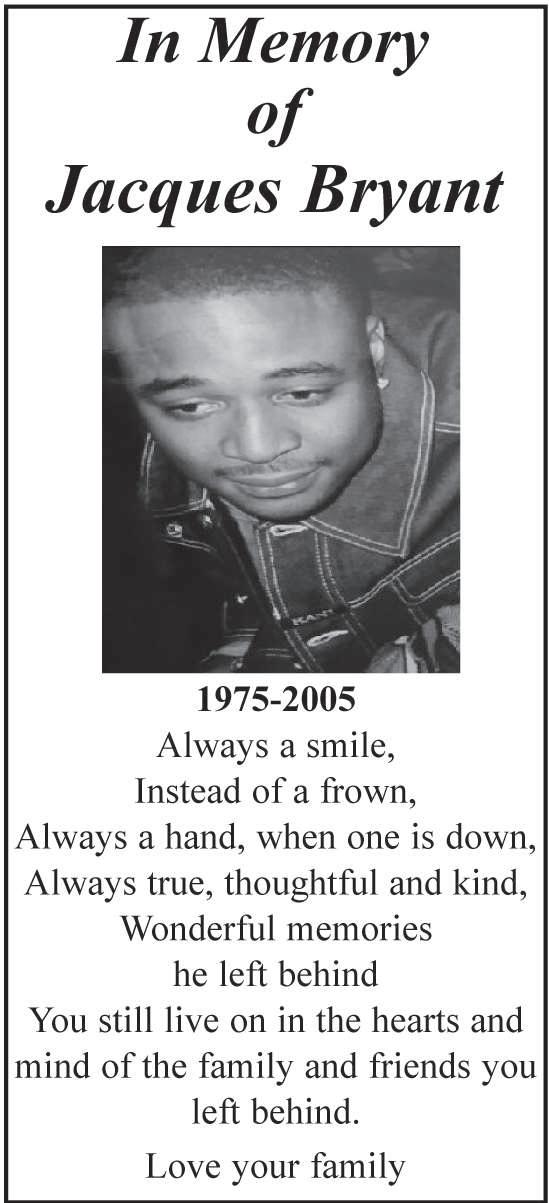
Greece, Italy, England, France, India, Hong Kong and Israel before returning to St. Louis.
He worked for the Milwaukee Public Schools before moving in 1971 to Washington, D.C., the hometown of his wife, Helen Proctor Pollard, where he worked for a decade in the public schools. His former Sumner student and football player, Vincent Reed, was superintendent for some of that period. After retiring in 1981, he continued to work as an education consultant, including in Brazil.
Preceded in death by Helen, his wife of 64 years, and his sister, Marianne, he is survived by his brother Dr. Randle E. Pollard (Mildred); children Veronica Pollard (Joel Dreyfuss), Bill III(Renée), Gayle Pollard Terry (Mike), Gaye Helen Pollard; grandson Justin Dreyfuss, and many nieces, nephews and cousins.
Donations may be made in the name of William B. Pollard to the Prairie View Scholarship Fund, P.O. Box 519, MS1200; Prairie View, TX 77446.
A Memorial Service was held February 15, at St. Paul A.M.E. Church, Washington, D.C.






Jen EverettPriya KambliWendy Red Star
Contributing Writer, Courtney M. Baxter, 2015 – 16 Romare Bearden Minority Graduate Fellow
The Saint Louis Art Museum celebrates Women’s History Month with its annual If It Wasn’t for the Women program on Saturday, March 19 at 10:30 am. Women of Color, Behind and Through the Lens welcomes distinguished photographers Jen Everett, Priya Kambli, and Wendy Red Starto present and discuss how their work addresses issues of cultural and gender identity.
Jen Everett, an emerging artist working in St. Louis, earned her bachelor’s degree in architecture from Tuskegee University. Her work has been exhibited in numerous venues around St. Louis, including Washington University’s Diversity Center. Everett has received grants for her work from the St. Louis Regional Arts Commission and she was an artist in residence at the Vermont Studio Center in October 2015. Most recently her traditional, two-dimensional photography and has expanded into threedimensional sculpture. Much of Everett’s work looks at Black urban and gender issues in St. Louis.
Priya Kambli was born in India and moved to the United States at 18 carrying her entire life in one suitcase. She completed her BFA degree at the University of Louisiana in Lafayette and received her MFA degree in Photography from the University of Houston. Kambli is a professor of art at Truman State University in Kirksville, Missouri. In 2008 PhotoLucida, an arts nonproit photography community based in Portland, awarded Kambli a book-publication prize for her project Color Falls Down. Kambli’s work speaks to her dual identity as both Indian and American. Wendy Red Star lives and works in Portland, Oregon. Red Star works in multiple media and she is inluenced by her cultural background (Apsáalooke/Crow Nation), daily surroundings, aesthetic experiences, and collected ephemera and their histories. Red Star received her undergraduate degree from Montana State University-Bozeman and her master’s degree from the University of California, Los Angeles in
SAVE THE DATE!
Women of Color, Behind and Through the Lens
Saint Louis Art Museum
Saturday March 19, 2016 10:30 am – 12:00 pm, Doors open at 10am Farrell Auditorium
Tickets are free and can be picked up at the Art Museum Information Center at no cost or online at MetroTix ($3 service fee does apply).
2006. Her work has been shown both nationally and internationally, including at exhibitions at the National Museum of the American IndianNew York, the Portland Art Museum, and the Minneapolis Institute of Arts among many others. Red Star will speak about Four Seasons, a fourpart photo series in the Saint Louis Art Museum’s permanent collection that is on view in Gallery 322.
Mark your calendar to join us March 19 to celebrateWomen’s History Month. In response the overwhelming success of last year’s programs, the event has been moved to the Farrell Auditorium to accommodate the growing audience—so bring your friends. The presentation begins at 10:30 am and doors open at 10:00 am. The program is free, but all auditorium events require a ticket. Free tickets can be picked up at the Saint Louis Art Museum Information Centers. For your convenience, tickets can also be obtained through MetroTix, however, MetroTix will charge you a $3 service free. For more information visit slam.org.



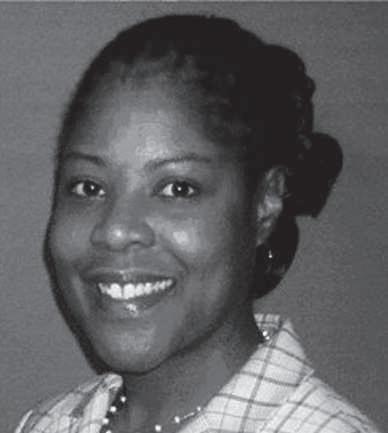
By Melanie Adams

From its entry into the country in 1820 as part of the Missouri Compromise, Missouri has been a state divided by its Southern tendencies and its Northern sensibilities. Nowhere is this division more visible than that state’s handling of race relations.
Starting with the Missouri Supreme Court’s determination of citizenship rights in the Dred Scott case up to the recent events in Ferguson, the state continues to struggle with creating opportunities for all of its residents. At the heart of this division are issues of real estate and housing disparities based on race.
In 1916, St. Louis became the first city in the country to pass a residential segregation law by popular vote. Though overturned and never legally enforced, the practice of residential segregation continued to be a strong force in the development of the St. Louis region and created many of the problems that remain unsolved today.
In order to explore the issues caused by generations of housing segregation, The Missouri History Museum in conjunction with the Missouri Humanities Council presents “A City Divided: Housing Polarization in St. Louis.” This free two-day housing symposium, made possible in part by a major grant from the National Endowment for the Humanities, features national and local scholars reflecting on the region’s historical connections between race and housing.
The symposium revisits the stories of white flight and public housing while introducing stories of restricted covenants and the connection between education and housing. The History Museum is one of eight partners that will provide programs throughout the state under the title, E Pluribus Unum?: Missouri and the Fractured Society. The other partners are the Bruce R. Watkins Cultural Center, Kansas City Public Library Kinder Forum on Constitutional Democracy, Nine Network for Public Media, The Guadalupe Center and Washington University in St. Louis.
Below is the schedule for A City Divided: Housing Polarization in St. Louis. All members of the St. Louis community are invited to attend to learn more about housing segregation in the region and engage in important conversations on moving beyond our racial divide. For more information please visit mohistory.org.
Friday, March 4
2 p.m. “The Great Divide: Housing Segregation in Greater St. Louis, 1916-2016” by Colin Gordon
Colin Gordon is professor of History and Public Policy at the University of Iowa. He is the author “Mapping Decline: St. Louis and the Fate of the American City” (2008) and “Growing Apart: A Political History of American Inequality” (2013). His work on the history of race and housing in Greater St. Louis also includes two web-based mapping projects (http:// worldmap.harvard.edu/maps/mappingdecline and http://mappingdecline.lib.uiowa.edu/), a series of articles on Ferguson in Dissent, and over 30 invited presentations.
3:30 p.m. “Segregated Money: African American Bankers and Credit in Early Twentieth-Century St. Louis” by Margaret Garb
Margaret Garb is the author of “Freedom’s Ballot: African American Political Struggles in Chicago from Abolition to the Great Migration” and “City of American Dreams: A History of Home Ownership and Housing Reform in Chicago.” She has published numerous articles in scholarly journals and in The New York Times, Chicago Tribune, Chicago Sun-Times, New York

St. Louis Convention and Visitors Commission
By Kiara Bryant
It seems that the groundhog always sees its shadow and winter continues for weeks, but by now we’re all ready to put an end to the cabin fever. We’re ready for spring, ready for more sports, concerts and social gatherings. Save the dates, here is just what you need for your calendar of events.
As March begins, basketball returns to the forefront with the start of March Madness. The Missouri Valley Conference will host our very own Arch Madness Basketball Championship presented by State Farm with four days and nine games of college basketball. Experience the excitement up close and personal on March 3-6 at the Scottrade Center. In St. Louis, we’ll be a part of the action as the world tunes in for the first and second rounds of the NCAA Basketball Championship on March 18-20 also at the Scottrade Center. So get your brackets ready and don’t forget to root for our Saint Louis Billikens on March 5 at the Chaifetz Arena.
And, for the first time, players straight out of the NBA will showcase their skills for the Champions League Charity Basketball Game at the Chaifetz Arena on April 10. This fast-paced, competitive basketball game will feature AllStars on the court and Hall of Famers as coaches and ambassadors. The proceeds from this event will benefit the Stuart Scott Memorial Cancer Research Fund at The V Foundation and St. Louis area charities. You may secure your tickets now at the Chaifetz Arena box office or online.

7 p.m. “The Pruitt Igoe Myth” screening and discussion with filmmaker Paul Fehler and journalist Sylvester Brown
“The Pruitt-Igoe Myth: an Urban History” It began as a housing marvel. Two decades later, it ended in rubble. But what happened to those caught in between? “The Pruitt-Igoe Myth” tells the story of the transformation of the American city in the decades after World War II, through the lens of the infamous Pruitt-Igoe housing development and the St. Louis residents who called it home.
Saturday, March 5
10:30 a.m. “Segregation: De Facto or De Jure?” by Richard Rothstein
Richard Rothstein is a research associate of the Economic Policy Institute. His recent work has documented the history of state-sponsored residential segregation, as in his report, “The Making of Ferguson.” He is the author of many books and articles about education and race, all of which can be found on his website, http:// www.epi.org/people/richard-rothstein/.
1 p.m. “Saving the Neighborhood: Racially Restrictive Covenants, Law, and Social Norms” by Carol M. Rose and Richard Brooks
Carol M. Rose is the Ashby Lohse Professor of Natural Resource Law, University of Arizona Rogers College of Law and the Gordon Bradford Tweedy Professor Emeritus of Law and Organization and Professorial Lecturer in Law at Yale Law School. Professor Rose teaches property, land use, environmental law, natural resources law, and intellectual property law.
Richard Brooks is the Charles Kellerman Beekman Professor of Law at Columbia University and a Professor (Adjunct) of Law at Yale Law School. His expertise is in contracts, organizations, culture, and law and economics.
2:30 p.m. “All Around The City, Same Song: White Currency, Black Stigmatization, and the Persistence of Housing Segregation & School Inequality” by Jerome Morris
Jerome E. Morris is the E. Desmond Lee Endowed Professor of Urban Education (in conjunction with St. Louis Public Schools) and a Research Fellow with the Center for Public Policy Research at the University of Missouri-St. Louis. His research studies in urban and suburban centers provide empirically grounded models for understanding race and education in post-Brown America. The nexus of race, social class, and the geography of educational opportunity is a major theme of Morris’ scholarship.
4 p.m. “The Aftermath of Ferguson” by Yemi Akande-Bartsch
Akande-Bartsch is president & CEO of FOCUS St. Louis. She is recognized as an expert in the areas of civic and leadership development, diversity and inclusion. She has close to 20 years of experience in designing and facilitating civic and leadership training, diversity and inclusion and coaching programs.
We’re about a month away from the opening of the National Blues Museum on April 2. But first blues musicians will take the stage for the 11th Annual St. Louis Blues Festival on March 4 at the Chaifetz Arena. Artists featured in the festival are: Lattimore, Sir Charles Jones, TK Soul, Shirley Brown, Calvin Richardson, Nellie “Tiger” Travis and Bobby Rush. Similarly, blues and rock musicians will bring Jimi Hendrix and his electric guitar to life with the Experience Hendrix Tour: Celebrate the Music and Legacy of Jimi Hendrix on March 8 at the Fabulous Fox Theatre. The tour line up includes: Billy Cox, Buddy Guy, Zakk Wylde, Kenny Wayne Shepherd, Jonny Land, Chris Layton and many more.
There’s plenty to do in St. Lou this spring as the comedic stage play “Tyler Perry’s Madea On The Run,” arrives at the Fabulous Fox Theatre on April 1-3. On April 5, we invite you to get your praise on with Gospel legend, Kirk Franklin as he performs the “Twenty Years in One Night
World Tour” at the Peabody Opera House. April in St. Louis means the return of the spring holiday known as Opening Day and the beginning of a new Cardinal’s baseball season. On April 20, Explore St. Louis will celebrate our annual Be a Tourist in Your Own Town trade show at Ballpark Village. To mark the start the tourism season and National Travel and Tourism Week in St. Louis, area attractions will gather to help local tourists plan spring and summer staycations. Join us at Ballpark Village prior to the Cardinals vs. Cubs game on Wednesday, April 20 for more information. For more recommendations of what you should see and do this spring in St. Louis, check out the events calendar and featured content on www. explorestlouis.com
Kiara Bryant is the public relations coordinator for Explore St. Louis.
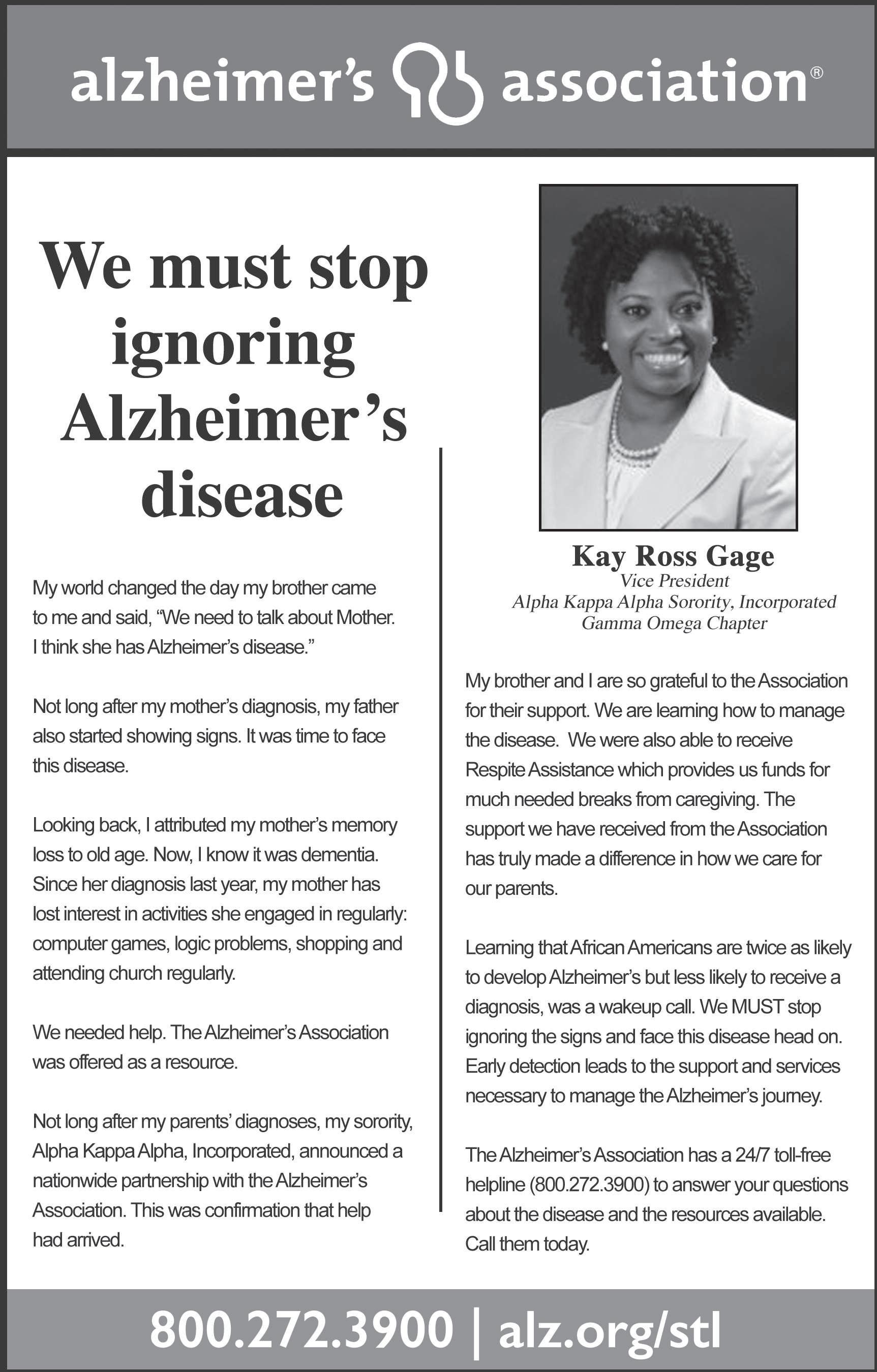


By Sandra Jordan
Of The St. Louis American
Representatives from the U.S. Army Corps of Engineers Formerly Utilized Sites
Remedial Action Program (FUSRAP) told attendees of a meeting last week at the James Eagan Center in Florissant that remediation of radioactive soil at a park in Hazelwood is completed and work to restore the park for use is underway.
“We’ve completed over 8,500 samples so far to date,” said Amanda Kruse, public affairs specialist for the U.S. Army Corps of Engineers. “We’ve finished St. Cin Park, we finished remediation and we’re working on just getting it back to its former state – just making sure we can plant seeds and sod. We want it to look like it did before – like nothing happened.”
Remediation now moves to Duchesne Park in Florissant. The park will be closed throughout the process.
Shawn West, Marian Gant and Vivian Fowler are concerned about exposure to radioactive contamination when they were children.
“Years ago, we were the first site tested, and they found very, very toxic soil in Robertson,” West said. “Robertson – it’s right off Lindberg between … James McDonnell and Missouri Bottom Road. The whole area was contaminated.”
West, Gant and Fowler grew up in Robertson – an all-black enclave that was nestled between the airport, Coldwater Creek and West Lake Landfill. A thriving area back in the day with vegetable gardens growing in family yards, its own school and firehouse is now deserted and leveled. Property owned by the families who lived there was purchased years ago by the airport.
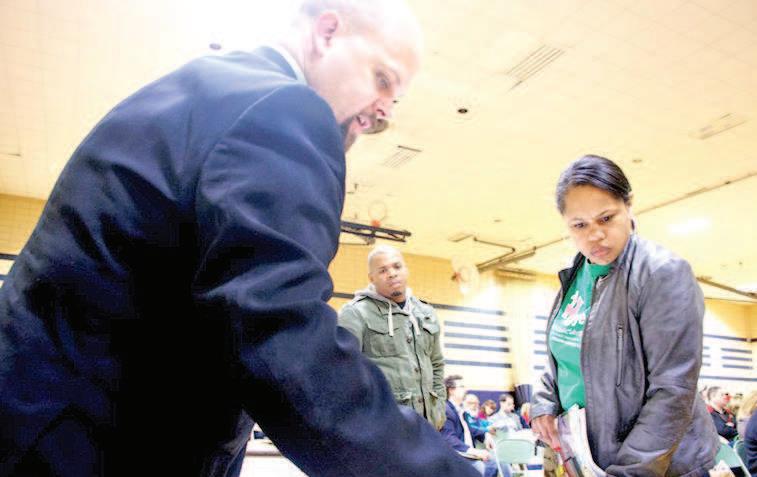
“The airport ended up buying Robertson out because the all the soil out there was contaminated,” West said. However, an airport spokesman told the American that it was noise, not possible soil contamination that prompted land buyouts in Robertson.
“The Airport purchased a portion of Robertson and the purchased was airport noise related and noise only,” said Jeff Lea, public relations director for Lambert St. Louis Airport. “The buyout was aided with FAA grants. The purchases were voluntary and limited to single family housing. The program extended between the mid-1980s through early 2000s.”
The former residents maintain that Robertson’s soil was indeed contaminated.
“The only thing out there now is the church, because the church wouldn’t let them test their soil,” West claimed.
He is talking about First Missionary Baptist Church of Robertson, located at 356 Woodlawn Avenue.
“That’s the only soil that has not been
Spencer Williams is the Regional Director for Region 7 of the Agency for Toxic Substances and Disease Registry talks with Angela Perry a 13-year resident of the Wedgwood subdivision where Cold Water Creek is directly across the street from her home.
overturned or tilled,” said Marian Gant.
A Corps spokesperson said citizens can contact them at the FUSRAP site (http://bit. ly/FUSRAPstl) to request testing of suspected contaminated areas.
Gant said people who lived in Robertson were dying of cancer at a very young age.
“Our grandparents built our home out there from the ground. My mom passed away at [age] 26 from a rare cancer,” Gant said. “I just know it was in her kidneys, liver and spine.
“As a kid, I stayed sick, every time I came to visit,” she added. “I stayed going to Normandy Hospital, throwing up, headaches and stomach was just, I couldn’t get used to it.”
Gant said health professionals never determined what was making her sick.
“My grandmother just said it must have been something I’d eaten, or whatever,” she added.
“I had a grandmother who died of cancer,” West said. I’ve had numerous family to die of cancer, at least four.” He said all of them lived in Robertson.
Your Health Matters is provided in partnership with


The Centers for Disease Control and Prevention is working with other public health officials to monitor ongoing Zika virus outbreak and transmission that is making its way through South American and Caribbean nations. A few cases have been reported in the U.S. from persons who traveled in those areas. Just this week, Trinidad and Tobago and the Marshall Islands were added to the list of destinations with Zika virus travel notices.
Dr. Otha Myles, an infectious disease specialist, provides an overview of Zika and its precautions.
What you need to know about the Zika virus

Recently, healthcare providers and the general public have been alerted by their state health departments and the Centers for Disease Control and Prevention (CDC) about the potential arrival of Zika Virus into the United States. This virus is primarily spread to people by bites from the Aedes species mosquitoes. However, a few reports exist of transmission via blood transfusion or sexual contact. This mosquito usually bites during the morning and later afternoon/evening hours, and may cause the disease known as Zika. Therefore, many individuals are concerned about the risks posed by this virus to them especially as they prepare for travel to areas around the world where this virus is known to presently exist. Zika virus was initially found in monkeys from Uganda, Africa in 1947. Since then, it has been found in humans in Uganda and the United Republic of Tanzania and outbreaks have occurred in Africa, Asia and the Paciic. In May 2015, the irst conirmed case of Zika Virus infection in Brazil was announced by the Pan American Health Organization (PAHO). Also, the Commonwealth of Puerto Rico reported its irst conirmed cases of Zika virus in December 2015. More than likely, the United States will see an increase in this viral disease in travelers returning from these countries and this may result in its spread locally. Fortunately, the CDC has known about this virus for a while and has been preparing for its possible spread by training laboratory personnel to effectively monitor, test and detect this virus in the United States and other countries around the world. Not everyone infected with this virus will get sick (only one in ive individuals approximately). Symptoms that are commonly associated with this disease are usually mild, last for no longer than a week and individuals may not even know they have been infected. These symptoms include fever, rash, joint pain and conjunctivitis (red eye) and usually begin two to seven days after being bitten by an infected mosquito. Other symptoms may include muscle pain and headache and usually last less than a week. If you return from travel to Zika virus areas and develop symptoms mentioned above, please see your healthcare provider as soon as possible. Your provider can assist with making the diagnosis by ordering specialized blood test to detect the virus.
Regarding pregnancy, this virus can be spread from a pregnant woman to her unborn baby. This perinatal transmission of virus has resulted in reports of serious birth defects

St. Louis County police officers are being equipped with and trained in the use of the heroin antidote Narcan.
Late last week, County officials announced that all commissioned police personnel will be trained to use the medication, which will be available in every St. Louis County patrol vehicle. Narcan is the brand name for naloxone hydrochloride, a nasal spray or injectable drug administered to persons known or suspected of having an opioid overdose. The police department is using the nasal spray.
equipping police with Narcan, it is a major step in the fight against the epidemic.”
n Narcan is the brand name for naloxone hydrochloride, a nasal spray or injectable drug administered to persons known or suspected of having an opiod overdose. The police department is using the nasal spray.
“Make no mistake, the heroin epidemic is not only prevalent in St. Louis County, but throughout the entire nation,” added St. Louis County Chief of Police Jon Belmar. “By equipping County police officers with Narcan, we have a real opportunity to save lives, as often times the police are the first responders on the scene of an overdose emergency. We saw over 90 heroin related deaths in St. Louis County in 2015. If we can cut into that number by
Narcan works by attaching to the same parts of the brain that receive heroin and other opioids. Narcan blocks the opioids for 30-90 minutes to reverse the respiratory depression that would otherwise lead to death from overdose. Narcan can help even if opioids are taken with alcohol or other drugs.
After a dose of Narcan, the person should begin to breathe more normally and it will become easier to wake them. It is very important to give help to an overdosing person right away. Brain damage can occur within only a few minutes of an opioid overdose as the result of a lack of oxygen to the brain.
Narcan (naloxone) gives concerned helpers a window of opportunity to save a life by providing extra time to call 911 and carry out rescue breathing and first aid until emergency medical help arrives.
St. Louis County Executive

with
We are
police and county resources toward educating the public,” he said. “And at my urging this
our officers
St. Louis County Executive Steve Stenger and County Councilman Sam Page, MD are urging passage of legislation designed to fight rapidly growing opioid and heroin abuse in the county by creating a prescription database.
“Heroin is a deadly epidemic in our region,” St. Louis County Executive Steve Stenger said.
“And many abusers begin with prescription drugs. This is a big step in fighting this public health crisis.”
Councilman Page introduced legislation establishing a Prescription Drug Monitoring Program (PDMP) in St. Louis County at the Council meeting on Tuesday, February 16. Councilman Pat Dolan is co-sponsor.
A prescription drug monitoring program creates an electronic database on opioid and other controlled substance prescriptions dispensed within a given jurisdiction. PDMPs help prevent an individual from receiving multiple prescriptions for the same opioids or controlled substances, making it more difficult for these drugs to be abused.
According to the National Institute on Drug Abuse, four out of five heroin users moved to heroin after abusing prescription drugs. Over the past seven years, more than 2,700 St. Louis area residents have

died from a heroin or opioid-related overdose. The Missouri legislature has considered PDMP legislation for the last 12 years, but has failed to pass it. Missouri is the only state in the country with-
Continued from A12
and other poor outcomes (ie. microcephaly or condition in which the baby’s head is smaller than expected for gender and age). Therefore, the CDC is recommending the following precautions:
istering Narcan on Thursday, Feb. 18.
out a PDMP.
“I have worked for years to make this legislation a reality, and we encourage other counties to join with us in this effort,” Page said. This program will cost
$100,000 to allow reporting from every pharmacy in St. Louis County. This legislation also allows other counties or jurisdictions to contract with St. Louis County for this service.
Continued from A12
“And it was numerous families that experienced this over time,” he added.
West added the stench was pretty bad from dumping of wastes in the area.
“It stayed terrible – the smell was terrible all the time and the airport said they bought them out because the planes were flying too low.”
Soil from the Berkeley Khoury League Park ballfield was contaminated from the radioactive waste. It was located at Banshee and James McDonnell Blvd. and was where many adult residents played as children.
“We there used to play ball in for years – we little black guys from Robertson,” West said.
“When speaking to Joanne Wade, who is with the Corps, she said they didn’t test the soil at Robertson, but they tested the soil over at Khoury League Park,” Gant explained. “That’s were all of us played for eight to 10 years every summer.”
“They said they are still removing from other there,” West interjected.
“They’re still removing. Everything is not remediated,” Gant added.
“My main concern now is getting everyone from there tested … for radiation exposure or any type of contamination,” West said,” because we are in the middle of West Lake and this Coldwater Creek deal. And it’s not telling what else they have dumped out there.”
“I had a cousin, who has passed now, who was a fireman. He went to Miss Suggs’ house down the street to put out a fire, and stepped into some material and it took his whole boot off,” West recalled.
“If we only knew.
“But we were not informed.” Robertson was a town of historical aeronautic significance. In 1929, the small town of Anglum, Missouri was renamed Robertson after World War I veteran aviators William and Frank Robertson, in honor of their contributions to aviation. The Robertson brothers cofounded and operated St. Louis Flying Field – on former farmland leased and later owned by Albert Bond Lambert.
William Bryan Robertson was the owner and president of Robertson Air Lines, which was contracted by the Post Office to fly air mail between St. Louis and Chicago. A young flight instructor named Charles Lindbergh was their chief pilot, the year before Lindbergh became the first person to make a solo nonstop transatlantic flight, from New York to Paris in the Spirit of St. Louis. The area where Robertson was located is now part of Hazelwood.
1. Pregnant women should postpone travel to areas known to have active transmission of Zika virus.
2. Pregnant women who must travel to these endemic areas should talk with their healthcare provider irst and adhere to “steps to avoid mosquito bites” during the trip (http://wwwnc.cdc.gov/travel/ page/avoid-bug-bites).
3. Pregnant women who have traveled or lived in the area with active Zika virus
transmission and who have male sexual partners should abstain from sex or use condoms for the duration of the pregnancy.
4. Women trying to conceive should consult with their healthcare professional before traveling to the endemic area.
Presently, there are no vaccines to prevent Zika. However, some things you can do to protect yourself and your
family from diseases spread by mosquito bites include:
1. Wear long-sleeved shirts and long pants.
2. Stay in places with air conditioning or uses window and door screens to keep mosquitoes outside.
3. Use insect repellant that has been evaluated for safety and effectiveness by the Environmental Protection Agency (EPA).
4. Treat clothing and gear with permethrin or buy permethrin-treated items.
While there is no speciic treatment for Zika virus infections, you can do the following to treat the symptoms:
1. Get plenty of rest.
2. Drink luids to prevent dehydration.
3. Take medicine such as acetaminophen to reduce fever and pain.

4. Do not take aspirin or other non-steroidal anti-inlammatory drugs.
Dr. Otha Myles, Adult Infectious Disease Specialist - Mercy Clinic Managing Owner, Myles Medical Consulting
Nutrition Challenge:
We each need at least 3 servings per day of whole grains. But what does that mean? How can we know what foods contain whole grains?
Look at the ingredients list of a package of food you are about to eat. If the word “whole” is used, then there is most likely a whole grain ingredient. A few items that don’t use the word whole

As spring approaches, warmer weather allows us all to get more outdoor exercise. Here are some ways to become a more active person.

are popcorn, wheatberries, brown rice and wild rice. Getting plenty of whole grains in your diet can improve your health and reduce your chance for some chronic illnesses such as stroke, diabetes, heart disease and high blood pressure. Visit wholegrainscouncil.com for more information.
Learning Standards: HPE 2, HPE 5, NH 1, NH 3, NH 5
Instead of playing video games — play baseball, football, badminton, or some other active game.
Instead of surfing the ‘Net — go for a brisk walk around the neighborhood.
Break into small groups and define what it means to be a bully. Share your ideas with the class. Did you have the same things listed (as the other groups) that you would consider as bullying behavior? Now back in your groups, create a newspaper ad that includes at least two of the following:
> How bullying hurts others.
> What to do if you are bullied.
INGREDIENTS:Whole Grain Corn,Sugar,Corn Meal,Corn Syrup,Canola and/or Rice Bran Oil,Cocoa Processed withAlkali,ColorAdded,Salt,Fructose,Natural andArtificial Flavor,Trisodium Phosphate,BHTAdded to Preserve Freshness.
Vitamins and Minerals: Tricalcium Phosphate,Calcium Carbonate,Zinc and
(mineral
(sodium
Tyler D. Roy, Licensed Clinical Professional Counselor

Instead of watching TV — ride your bike with friends.
Can you think of other ways to be more active? Going outside and staying active not only increases your heart rate and burns calories, but it also helps you build friendships!
Learning Standards: HPE1, HPE 2, HPE 5, NH 1, NH 5
> What to do if you see someone else bullied.
> What to do if YOU are the bully.
Look through the newspaper for examples of ad layouts and design. Discuss the words “compassion,” “empathy” and “sympathy.” How do they each play into your response to bullying at your school?
Learning Standards: HPE 2, HPE 5, NH 4
Ingredients:
2 Tbs butter, ¹/3 Cp honey, ¹/3 Cp brown sugar, pinch of salt, 2 Cps rolled oats, 1 cup chopped nuts, 1 cup dried fruits, 2 Tbs wheat germ
Directions: Melt butter in a saucepan with the honey, brown sugar and a pinch of salt. Mix in the rolled oats, chopped nuts, dried fruit and wheat germ. Press into a parchment-lined 8-inch square pan and bake for 30 minutes at 300º F. Cool, then cut into bars.
Where do you work? I work at Southern Illinois Healthcare Foundation (SIHF). Where did you go to school? I graduated from Lincoln Senior High School in East St. Louis, Illinois, and earned a BA in Psychology and Criminal Justice from Saint Louis University, St. Louis, Missouri, and my M.Ed. in Professional Counseling from the University of Missouri —St. Louis.
What does a licensed clinical professional counselor do? Each day, I work with people — especially kids on understanding and solving any kind of problems they may be having at home, at school, and with others. I help people come up with healthy ways to express their feelings, teach them how to feel better about themselves, how to make good choices, and how to deal with very tough situations that may be going on in their lives.
Why did you choose this career? I chose this career because it allows me to do TWO things I absolutely love — TALKING and HELPING PEOPLE! I also love teaching people to discover great things about themselves and how to use their brains in ways they’ve never done before.
What is your favorite part of the job you have? It amazes me to watch people develop healthier minds. My favorite part of the job is seeing people become happier and more excited about their life. I love helping people see how much stronger, smarter, and happier they can be if they just learn to think a little differently!
Learning Standards: HPE6, NH3

The St. Louis American’s award winning NIE program provides newspapers and resources to more than 7,000 teachers and students each week throughout the school year, at no charge.

Griffith Elementary School 5th grade teacher Tracy Smith, shows students Michael Callier and Tmya Bradley how to measure how much water can sit on the face of a penny using an example from the education page in the newspaper. Griffith Elementary is in the Ferguson-Florissant School District.


Oceanography is the study of the ocean. This includes marine life, the geography of the ocean floor, and the water in the ocean. Scientists that study the ocean are oceanographers; they study underwater volcanoes, bacteria, and creatures that live in the ocean. Did you know that around 90% of volcanic activity occurs in the ocean? The study of oceans is important because oceans are an important source of food, oceans are used for trade and travel, and they also impact the weather and climate.

formations, temperature, and water pressure.
Oceanographers also use sound waves to echo off the ocean floor to create a map of elevations.
Oceanographers use other branches of science such as biology, geology, physics, and chemistry.
Oceanographers use tools such as satellites to allow them to look at any ocean on the planet.
Oceanographers also use buoys on the water to study the motion of ice

Background Information:
Did you know that less than 1% of the earth’s water is fresh water? In this experiment, you will use a buzzer to test saltwater. Saltwater has molecules that dissolve into ions that help carry electricity. Fresh water does not have these ions.
Follow the directions carefully.
Materials Needed:
• Masking Tape • 9-Volt Battery
• Buzzer • Popsicle Sticks
• Aluminum Foil • Water • Saltwater
Procedure:
q Cover two Popsicle sticks with aluminum foil.
Learning Standards: I can read nonfiction text for main idea and supporting details. I can make text to text connections.
e Next, tape one foil-covered Popsicle stick to the black wire of the buzzer. Tape the other one to the negative end of the battery (negative end has a minus sign).
r You can see if your tester is working by touching the metal together. If it doesn’t buzz, check your connections to make sure everything is taped together the right way.
t Put just the tips of the metal in saltwater, about an inch apart. Make sure the two metal parts don’t touch. The saltwater will act like a wire, connecting the metal sticks, completing the circuit, and making the buzzer buzz.
Extension: Try this experiment with other liquids, such as milk, vinegar, sugar water, etc. What are the results?


Ashanti Johnson grew up watching Jacques Cousteau, the famous oceanographer, on TV. She was fascinated by the ocean and wanted to be just like him. In fifth grade, Johnson got to spend the day with a female marine biology graduate student, who encouraged her dreams of studying the ocean.
When Johnson attended Texas A&M University to study oceanography, there were only eight African Americans enrolled in the university. Johnson was the first AfricanAmerican student body president. She became the first African American to earn a doctorate in oceanography from Texas A&M, in 1999, as well as one of the first in the country. Johnson then became an assistant professor of chemical oceanography at the South Florida College of Marine Science. She has also worked at the Georgia Institute of Technology School of Earth & Atmospheric Sciences, and the Savannah State University Marine Science Program. Her most recent job was at the University of Texas at Arlington Department of Earth and Environmental Sciences.
Johnson felt that students were often encouraged to become doctors or lawyers, but no one told them about the field of oceanography as a career. So she created the Minorities Striving and Pursuing Higher Degrees of Success in Earth System Science initiative (MS PHDS). This organization has helped approximately 200 minority students find careers in the earth science field. Once students are part of the MS PHDS organization, they continue to meet to network with other professionals and to support each other. For her efforts in the MS PHDS, President Obama awarded her the Presidential Award for Excellence in Science, Mathematics and Engineering Mentoring. She also was invited to attend the White House Workshop on STEM Minority Inclusion, as well as the White House Forum on Minorities in Energy. Johnson’s research focuses on the coastal regions of Georgia, Florida and Puerto Rico. Her research has been published in many different scientific journals. She has also served on numerous boards and committees including the NSF Advisory Committee on Environmental Research and Education, American Geophysical Union Committee on Education and Human Resources and Subcommittee on Diversity, Association for the Sciences of Limnology and Oceanography Education Committee, International Safe Water Conference Steering Committee and many more.
She was recognized by TheGrio.com as one of 100 History Makers in The Making, she appeared in the Black Enterprise Magazine March 2011 Issue’s “Women In STEM” Feature Story.
w Then, get a buzzer and tape the red wire of the buzzer to the positive end of the battery (positive end has a plus sign).

z Rene and Derrick are swimming laps for a swim meet. They swim at the same constant rate, but Rene starts swimming before Derrick. When Derrick has finished 2 laps, Rene has completed 4. How many laps has Rene completed when Derrick has finished 8 laps? ________
x It takes 2 hours and 15 minutes for a gallon of water to evaporate from the bayou. Then, it takes 1 hour and 35 minutes for that gallon of water to form a cloud. Next, it takes 6 hours for the cloud to rain down on a stream. Finally, it takes 45 minutes for the water in the stream to get to the Mississippi River. How long did it take for the water to get from the bayou to the Mississippi River? ________


Learning Standards: I can follow a process to complete an experiment. I can analyze results and draw conclusions.
c You have a fish tank 100 feet long and 10 feet wide that holds a volume of 15,000 cubic feet of water. What is the depth of the tank? Remember, volume = length x width x depth. ________
v A water tank is 25 ft wide, 75 ft long and has a water depth of 10 ft. How many gallons of water are in the tank ________
b What is the perimeter of a water plant with the following dimensions: 100 ft, 250 ft, 300 ft, 500 ft, and 220 ft? ________
Learning Standards: I can add, subtract, multiply, and divide to solve a problem.


Learning Standards: I can read a biography about a person who has made a contribution in the fields of science, technology, engineering, and math.

Enjoy these activities that help you get to know your St. Louis American newspaper.
Activity One —
Author’s Writing Style:
Make a chart showing examples of the vocabulary variations that appear in different sections of the newspaper. For instance, the jargon used in the sports section is quite different than the formal writing style in a news story. Classified sections use specific abbreviations. How does author word choice and writing style differ throughout the newspaper?

Activity Two —
Pollution: Find articles in your newspaper that discuss water and/or air pollution. Discuss the causes and possible remedies. Write a science fiction story telling how life could be in another 100 years if the pollution problem isn’t solved.
Learning Standards: I can use the newspaper to locate information. I can identify author’s writing style and audience. I can make text to world connections.



Loretta Lynch, head of the Department of Justice, responded to Ferguson city officials with a law suit and a provocative statement.
Claiming the DOJ changes would be too costly to the city, Ferguson city officials chose to spend millions of taxpayers’ dollars to fight the recommended changes, dollars that could go towards implementing a more just course for the municipality.
Remarking that Ferguson had missed an opportunity to step forward, Lynch declared the city had instead “turned backwards” and “chosen to live in the past.”
The unanimous decision by the City Council reneged on an agreement with the DOJ that was months in the making. The about-face was an arrogant indication that city officials were steadfastly committed to past practices and policies of racial discrimination, though they claim exactly the contrary – that the city has already instituted reforms.
The city’s changes in police
and court procedures made since the Brown shooting (like the weak civilian oversight board) have been seen by most observers as largely superficial and inadequate given the persistent and protracted racism in Ferguson.
The negotiated agreement came after a blistering report by the DOJ released after the police killing of Michael Brown Jr. in 2014. The DOJ found widespread abuses by the police department including illegal stops, searches and arrests. There was also issues of disproportionate use of canine dogs against black people (even children), retaliation for filing or threatening to file reports against police, and the arbitrary use of stun guns.
Ferguson has violated the constitutional rights of its majority-black population— the First, Fourth and 14 Amendments. The DOJ has documented that African Americans were treated
like second class citizens in Ferguson.
The current line-up of city officials and many employees had decades of knowledge regarding the police department’s terrorizing of black folks and the oppressive court system that used them as ATM machines.

At any time these public servants could have intervened on the side of justice. Their actions may have even averted the police killing of an unarmed teen and a community uprising. It definitely would’ve made the intervention of the DOJ unlikely. Now that their racist patterns have been exposed, there is still no genuine effort to tackle the monster of white supremacy.
This is why I think city officials and some Ferguson residents are narrow in their thinking. This ugly situation is not just about Ferguson and its residents. The victimization
of citizens goes well beyond those who physically live there. It’s also about the folks who have to come to and through Ferguson who have suffered and who have a vested interest in Ferguson getting its house in order.
Thousands participated in the Ferguson Commission process to dialogue about the racism plaguing Ferguson and other North County municipalities. The idea was to go forward on the “Path toward Racial Equality,” as the commission’s report was entitled. Thousands more moved to make officials accountable during the Radical Reconciliation activities last fall. It’s time to re-engage and ramp up our efforts to make the city responsible for its crimes and to work in earnest to rectify the serious violations of civil liberties along with constitutional and human rights.
There is a sentiment by some white Ferguson residents that they’d rather lose their city than concede to the DOJ demands. That’s an unfortunate sentiment – but it is an option.


By James T. Ingram
For the St. Louis American
I have the rariied distinction of being born on February 29, better known as leap day. That means I, technically, only have the privilege of celebrating my actual “birthday” every four years, since February typically only has 28 days.
The chances of being born on a leap day are one in 1,461, meaning that my parents are either mathematical geniuses or exceedingly lucky, depending on your perspective.
However, what generally galls me is not the leap year jokes or questions like, “so how old are you now?” or “when do you celebrate?” Believe me, I’ve heard every pun, quip, joke and backhanded remark and I’m well over it. You have to be.
have 31 days, while February had 30 days. So upon taking the reins of Roman authority, Caesar Augustus stole 2 days from February and added them to the month of August, equalizing August with July and causing February to be reduced to 28 days.

Columnist James Ingram
But, being one who routinely writes about the arrogance, temerity, selishness and endless egotism of politicians, I ind it ironic that my very birthday celebration (or lack thereof) is the direct result of the very “poli-tricks” of which I, so often, write.
So have you ever wondered why February has the least number of days? The answer, in a word, is “poli-tricks.”
You see, Roman Emperor Caesar Augustus’ ego became bruised because the month of August (named after him) only had 29 days because his predecessor, Julius Caesar (for which the month of July is named), manipulated the months in the Julian calendar to
But these changes created a disparity between the solar system and the Gregorian calendar, resulting in Pope Gregory XIII’s astronomer, Sosigenes, having to add a leap day every four years to keep our calendars and clocks in sync with the Earth and its seasons. Allofthisfoolishness, disarray and back-andforth simply because of the political egomania of two Roman emperors, without regard to the overall impact on others. It reminds me of the presidential candidacy of Donald Trump or a few politicians that I’ve written of in East Boogie, who’ve politicked in order to name schools and buildings after themselves simply to satisfy their insatiable egos.
So I, along with rapper Ja Rule, motivational speaker Tony Robbins and countless other “leaplings” have “poli-tricks” to thank for our dilemma.
On the positive side, however, a leap year birthday is better than no birthday, if you really put things into their proper perspective.
Email: jtingram_1960@ yahoo.com Twitter@ JamesTIngram
American staff
The St. Louis Public Library and Washington University Libraries have launched the African American Communities collection.
The collection spotlights
St. Louis, Chicago, Atlanta, and New York, as well as towns and cities in North Carolina. Through pamphlets, newspapers and periodicals, correspondence, and official records, it provides a multifaceted overview of the African-American communities in those areas, documenting the challenges they faced in dealing with racism, discrimination, and integration.
“Learning about ourselves, our neighbors and our community is more important to St. Louis than ever before, and our libraries stand together at the forefront of that effort,” said St. Louis Public Library Executive Director Waller McGuire.
Collection strengths include:
• Urban League of St. Louis Records, 1918-1986, that document the efforts of the organization as it
worked to meet the needs of the city’s AfricanAmerican population.
• Information related to the St. Louis Pruitt-Igoe Housing Project.
• Materials documenting African-American student protests at Washington University beginning in the late 1960s. In 2013, the Washington University (WU) Libraries began working with academic publisher Adam Matthew Digital on the creation of the African American Communities. In creating the collection, Adam Matthew digitized selections from the WU Libraries’ holdings of St. Louis historical materials –materials that previously could be accessed only by visiting the WU Libraries. The collection is now available online, by subscription.
Recognizing the value of the collection to the entire St. Louis community, the WU Libraries and Adam Matthew worked together to make African American Communities collection available, free of charge, to the St. Louis Public Library and its patrons.
“The sharing of this unique resource with the St. Louis Public Library and its patrons supports the Washington University Libraries’ vision to inspire creative exploration, cultivate intellectual growth, and enrich our local community’s scholarly pursuits,” said Jeffrey Trzeciak, university librarian at Washington University.

By Maria Altman
Of St. Louis Public Radio
St. Louis officials often cite “decades of disinvestment” in their bid to get the National Geospatial-Intelligence Agency to move to the North Side.
Just a few blocks away from the proposed site, Family Dollar is proposing a store on North Florissant Avenue. That effort is opposed by 5th Ward Alderwoman Tammika Hubbard. The Family Dollar received a conditional use permit for the location more than a year ago. The company has an agreement to buy out the family-owned Bob’s Quality Market located at 2708 N. Florissant Ave. But the project was put
n “It would be nice to get diapers without having to go several miles away,” Leah Lunsford testified at the hearing.
on hold last year when Family Dollar merged with Dollar Tree. When the company sought to renew the permit last month, Hubbard filed a note of opposition. “This project will not be a positive impact to the community,” Hubbard stated in the letter to the city’s zoning administrator.
The discount chain sells a range of products including milk and eggs, personal items such as laundry detergent and toothpaste, and some clothing.
Residents in the St. Louis Place and Old North neighborhoods rallied and gathered more than 200 signatures in support of the store. Several attended a conditional use permit hearing last week at City Hall.
“It would be nice to get diapers without having to go several miles away,” Leah Lunsford testified at the hearing. Lunsford, her husband, and three children live in the neighborhood and are rehabbing a home
DOLLAR, B2

Channing Dungey was named entertainment president of Disney’s ABC television network, becoming the first African American to lead a major broadcast network. Dungey, who has been a Walt Disney Co. executive for more than a decade, helped develop ABC hits, including “Scandal” and “How to Get Away With Murder.” She replaced Paul Lee.
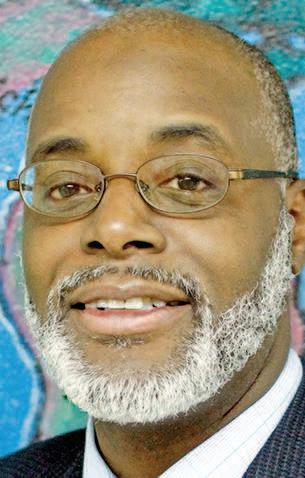
Brian Weaver Sr. was awarded the 2016 Jennings School District Teacher of the Year. He has served as a teacher in Jennings for 24 years. “He truly brings to life social studies,” shared several of his students. He accepted the award with his wife, Alice Weaver, who also has served in the Jennings School District for over 20 years.

Sonia Rucker is Southeast Missouri State University’s Coordinator of Institutional Equity and Diversity, as well as the institution’s Title IX coordinator. The President’s Task Force on Diversity Education recently released a slate of recommendations for the campus which will take shape in the coming months. She holds a master’s degree in educational psychology from Texas A&M University-Central Texas.
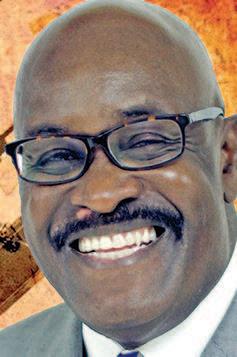
Dello Thedford was awarded 2016 Co-Fine Arts & Electives Teachers of the Year by the Jennings School District. He is the district’s vocal music and performing arts director. He has been an educator for 43 years, with 40 years of service in St. Louis Public Schools and three in Jennings.
By Jeff L. Pittman For The St. Louis American
I can’t believe that more than seven months has passed since I assumed the role of chancellor of St. Louis Community College on July 1, 2015. Albeit it has been a windmill of activity of balancing my time in meeting community leaders and learning about the operations of the college, my family and I have also managed to find the time to explore the St. Louis area and meet hundreds of individuals who have welcomed us to the area and embraced us as longstanding friends.
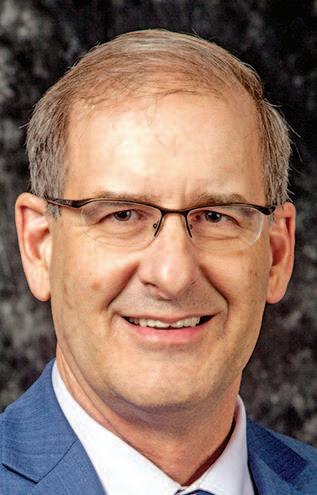
The college has recently engaged in a Strategic Planning Cycle that is scheduled to conclude at the end of June 2016. Within the current stage of the planning cycle, staff have poured over relevant demographic, economic and workforce data, and will also be working with external stakeholder groups to assist in setting the stage to establish strategic priorities, objectives and measurable outcomes over the next 3-5 years. We have already discovered both progress and challenges that exist within the region, and are eager to begin aligning the college’s programs and services in a manner that will position us to be a strong partner in improving and expanding the local economy and workforce

Joaquim Westfall found work in the healthcare information technology at TriZetto after earning an IT-Help Desk Support certificate and associate degree in computer information systems/network specialist at St. Louis Community College.

Leslie Broadnax is a member of the newest class of the Diversity Leadership Fellowship program for FOCUS St. Louis. The program explores race, ethnic and cultural identity; dynamics of privilege and power; leading and managing diversity initiatives; and strategies for interrupting racism. She is city administrator/attorney for the City of Pasadena Hills.

Jim Price Jr. was appointed Government Employees Director of IAM International. Previously he was Collective Bargaining Coordinator. A 37-year IAM member, he has been involved in high-profile negotiations
By Nathaniel Sillin
Most parents put countless miles on the car driving kids back and forth from various practices and games throughout elementary and secondary school.
As for the actual dollars behind all that driving and purchasing of uniforms, equipment, lessons and various activity fees, the numbers are pretty eye-opening. A 2014 study by the Utah State University’s Families in Sport Lab (http://www. usufamiliesinsportlab.com) shows that the average annual family financial investment in youth sports came out to $2,292.42, or 1.84 percent of that family’s gross annual income.
Other research done within the program indicates that many parents spend much more – some in excess of 10 percent of gross annual income.
Whether that figure sounds low or high depends on your child’s chosen sport and the number of years your child participates in it.
Whether your child’s interest in sports is temporary or a long-term commitment, it’s not only important to plan and budget what you’re spending but to find ways to save. Here are some steps to begin:
Link up with other parents. Whether it’s after-
continued from page B1
just behind the store. She said you can see drug deals take
school or weekend soccer, hockey or baseball, your first source of intelligence is with parents who already have kids playing the sport. Discuss everything from the best program for your child overall to individual costs and fees associated with play – and don’t forget to ask them how they’ve kept their budget in line.
Schedule for the best discounts. Don’t miss any opportunities for sales on merchandise or discounts on training and activity fees. Paying early on merchandise, sports camp or pre-season activity fees can save significant money over time. Above all, avoid late registration fees on all sports and activities.
Make sure your child’s health insurance is adequate. Depending on what sport your child plays, you may end up buying additional coverage beyond what your family health insurance allows. It takes virtually no time for a night or two in the hospital to run into tens of thousands of dollars, so take every step to make sure your child has the right coverage. Some health insurers may sell special sports coverage for minors, but if your child is playing an organized sport within a school system or league, they may have their own insurance requirements before they allow
place in front of the current business.
“Dealers that line up before you go into the store will ask you, ‘Hey, do you want to buy something?’” Lunsford said.
The family sometimes finds

your child to play. There may be other coverage options as well –run those options by your qualified financial experts or fellow parents who are insuring their children against sports injuries.
needles on their property.
The St. Louis Metropolitan Police Department had reports of 21 calls for service from 2708 N. Florissant Ave. in the last six months. Two of those resulted in police reports.
Buy used. Whether it’s equipment or uniforms, see if there are safe options to buy used. Auction sites may provide some solutions while many communities known for particular sports may have used equipment stores that can
The Family Dollar would have surveillance cameras both inside and outside of the store, according to David Soto, a principal with Atwater Group. The development company is working with Family Dollar,

neutral colors and styles. If you’ve got a growing child who is likely to maintain interest in a particular sport over several seasons, stock up on clothing in different sizes and go for neutral colors and styles that allow for genderneutral hand-me-downs.
Negotiate shared transportation and group fees when possible. Again, in partnership with other parents or your school system, see if there are cheaper ways to travel, buy gear and find play and practice space. Always be on the lookout for cheaper options and set up a network either by email or social media where there’s a free flow of spending tips and discounts that might come in handy. As for lessons, try the classroom approach. If your child wants to improve in a sport, work with other parents to hire an instructor who will do group lessons that will assure a lower cost per family.
cut your bills extensively. If your child isn’t destined for the pros, buying used makes a lot of sense – why buy full price if at some point their interest wanes?
Buy multiple sizes and
and Soto testified at the hearing.
He said the store would not sell alcohol.
Other residents at the hearing questioned why the alderwoman would oppose a store the community desperately wants. Tom Bratkowski, who lives a few blocks away, said he was disappointed that Hubbard did not attend an open house held by Family Dollar or the hearing at City Hall.
“The alderwoman doesn’t seem to be interested in our area, and so we have to take the initiative on our own and we feel this is the best solution for us,” he said.
Hubbard declined St. Louis Public Radio’s request for an interview.
Some attending the hearing wonder whether the alderwoman’s relationship with developer Paul McKee Jr. has led to her opposition for the store. Her brother, Rodney Hubbard, runs the
Bottom line: Even if your child doesn’t grow up with the natural skill of a Manning brother or a Williams sister, it’s possible to introducing them to youth athletics without ruining your family finances.
Nathaniel Sillin directs Visa’s financial education programs. To follow Practical Money Skills on Twitter: www. twitter.com/PracticalMoney.
nonprofit Carr Square Tenant Corporation, which owns a 2.5 percent stake in McKee’s Northside Regeneration.
While the North Florissant location is not within Northside Regeneration’s massive project area, it’s just blocks from a site at North 13th Street and North Tucker Boulevard where the developer has long talked of putting a food market Leah Lunsford said she never expected to have to fight for a Family Dollar.
“It’s something that would really serve the community, and it’s sad that our alderwoman is letting politics or money or whatever her issue is get in the way of meeting needs of the community,” she said.
The city’s Board of Public Services is expected to make a decision on the conditional use permit sometime next month. Follow Maria on Twitter: @radioaltman. Reprinted with permission from news.stlpublicradio.org.
Business Brief
Earnings tax break for city residents who work in another state
City residents who earn and pay income tax in another state may credit that amount towards their City of St. Louis Earnings Tax, according to a new regulation put in place by Collector of Revenue Gregory F.X. Daly. It goes into effect for the 2015 calendar tax year, payable by April 18. This regulation is not retroactive. This regulation is in response to a May 2015 U.S. Supreme Court decision in the case of Maryland v. Wynne The court determined that income taxes paid to another state on earnings generated in that state should be recognized in a person’s resident state and shouldn’t be taxed twice.
To verify the credit request, the Collector of Revenue requires a copy of other state’s income tax return. The W-2 showing other states withholding is not sufficient to receive the credit. Daly said this tax credit, which will affect less than 1,000 city residents, can’t exceed the amount of earnings tax paid. This credit does not apply to people who work for a company headquartered in another state; only people who live in the City of St. Louis and work in another state. City residents can call the Earnings Tax Department at 314-622-3291 for more information.

“I could never play basketball in this soft era.”
– Former NBA All-Star Gary Payton

The road to Columbia begins for large schools around the state of Missouri next week as district tournament play begins for Class 4 and 5 schools next week. Here is quick preview of the upcoming Class 4 and 5 district tournaments involving area teams. To see the complete brackets and schedules, you can visit the mshsaa.org website.

Class 5 District 2 (at SLUH): Championship game, March 4, 7:30 p.m. - Top seeds Webster Groves and SLUH appear on a collision course for another classic district championship game. Girls: Cor Jesu and Webster Groves appear headed for a championship showdown.
District 3 (at Troy): Championship game, March 4, 7 p.m. - Host Troy is the top seed, but will be challenged by Timberland and Fort Zumwalt West. Girls: Holt is the top seed with a challenge from Fort Zumwalt West.
District 4 (at Fort Zumwalt South), Championship game, March 4, 7:30 p.m. - Senior laden Francis Howell gets the top seed with its strongest challenge expected to come from Fort Zumwalt South. Girls: Francis Howell has enjoyed a tremendous season.
District 5 (at Hazelwood Central): Championship Game, March 3, 6:30 p.m. - Top-seed Hazelwood Central has enjoyed a tremendous season against a tough schedule. Pattonville and DeSmet will offer the challenge. Girls: Hazelwood Central and Parkway North should make a big final game.
District 6 (at St. Joseph’s): Championship game, March 5,

By Earl Austin Jr. Of The St. Louis American
There are a lot of exciting things happening on the campus of HarrisStowe State University, particularly in the athletic department.
One of the most exciting aspects has been the sudden emergence of the women’s basketball program, which has been rolling along under the guidance of first-year coach Hana Haden.
n “There have been a lot of factors in our success, but I would attribute a lot of it to the changed culture on campus.”
– Coach Hana Haden
At 24, Haden is only two years removed from college, where she was a standout at Western Carolina. After a stop at UMSL as an assistant coach last season, Haden made the jump to becoming a head coach. She took over the Harris-Stowe program and already has the Hornets in strong contention in the American Midwest Conference.
The Hornets entered the week with a 17-11 record and a 15-7 mark in AMC play, which is good for third place. Haden brought in 11 new players to the program and they are starting to jell at the right time. Harris-Stowe is currently riding a seven-game winning streak.
“There have been a lot of factors in our success, but I would attribute a lot of it to the changed culture on campus. It has attracted a lot of good basketball players and a lot of good people,” Haden said.
“We brought in 11 newcomers who were good players and all-around good kids. We have a really good group that has bought in to what we want to do.
Women’s basketball team enjoys success under first-year coach Hana Haden McDonald’s All-American Jayson Tatum will lead Chaminade’s quest for a state championship as postseason play begins next week. Chaminade is the No. 1 seed at the Class 5, District 6 tournament at St. Joseph’s Academy.
NFL continues to lie and make up rules to line pockets
If the U.S. President thing doesn’t work out for Senator Bernie Sanders, maybe he can get a lucrative job as the head of the NFL Players’ Association. Sanders has traveled around the nation screaming about the impact greedy billionaires have had on the United States. Sports fans need to look no further than the No Fun(d) League. No, I’m not talking about the time that local, gluttonous billionaire took his team back to the West Coast. This week, the Wall Street Journal reported that NFL Commissioner Roger Goodell and his billionaire owner buddies got caught red-handed, taking money from the league’s players. Stephen Burbank, an independent arbitrator, ordered the league to return approx-

Ishmael H. Sistrunk
imately $120 million dollars it stole withheld from the players. Around $50 million of those dollars should have gone directly to players’ salaries over the past three years. The NFL lying and making up rules to line fat cat pockets? OMG! Who would have ever believed it? The only thing unbelievable about the situation is that the league got caught and will actually have to return the money. As a result of the ruling, the league’s salary cap for 2016 is expected to get a $2 million bump as well. When is the last time somebody was caught cheating in the NFL and actually suffered a meaningful penance? Then again, paying the stolen money back is hardly a penalty. It’s not like a bank robber could get caught by the police and get off by simply
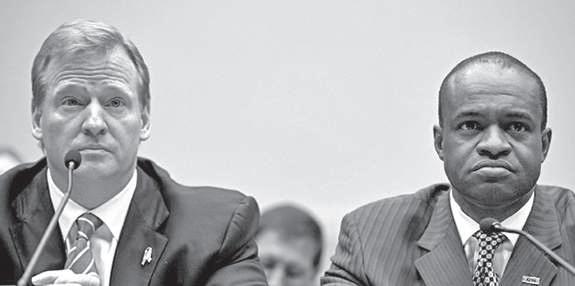
saying, “You caught me. I’ll take the money back.” “They created an exemption out of a fiction and they got caught,” NFLPA chief DeMaurice Smith told the Wall Street Journal. According to the league, it was a simple “technical accounting issue.” I have a feeling the league would still
be a’counting that money if Smith and his team hadn’t discovered the discrepancy. To make matters worse, according to Mike Florio of NBC Sports, the NFL’s defense was that the NFLPA should not receive the money because it waited too long to make the claim. In other words, because the players discovered they’d been robbed too late, they shouldn’t get what was rightfully theirs. Imagine the discipline Goodell would dole out if a player got caught stealing $120 million. Players are called
See CLUTCH, B5
With Alvin Reid
The State Farm Missouri Valley Conference men’s basketball tournament is noted as one of the nation’s best run and most successful during the NCAA’s postseason. The nation takes notice of “Arch Madness,” which is celebrating its 40th year in 2016.
The 10 MVC schools (Bradley, Drake, Evansville, Illinois State, Indiana State, Loyola Chicago, Missouri State, Northern Iowa, Southern Illinois and Wichita State) have men’s and women’s teams in 12 sports. In addition, six MVC member field FBS college football teams.

said. “Currently, I’ve been doing graphic design for the Coach of the Year banquet; there is a Hall of Fame event and All-Conference teams are named.
“During the tournament I’ll help coordinate the video streaming for the postgame press conferences.”

He added, “This is a most important time for the conference. We are at a neutral site and we get the most traffic of the year at the MVC website and the Arch Madness tournament website.”
Keeping MVC fans on top of all the action in this digital age is Derrick Docket, MVC associate commissioner for new media & technology.
“It’s all hands on deck right now,” he said Tuesday, February 23 from his MVC office. Called the league’s “point person” for information and technology, Docket manages the MVC website administration and oversees the conference’s various athletic websites.
“My role is doing the marketing and creative for digital social media, including Facebook and Twitter,” Docket
Docket is a 2002 Missouri State University graduate with a B.A. in Art and Design, Advertising and Promotion. He was a production artist and analyst with St. Louis based Epsilon and also served as a computer graphics specialist at the advertising agency Osborn & Barr Communications.
The MVC Tournament tips off at 6:05 p.m. Thursday March 3 and the championship game is at 1:05 p.m. Sunday March 6 on CBS.
Stedman steadfast about playing
On the evening of November 24 St. Louis Rams wide receiver Stedman Bailey was sitting on the passenger side of a parked vehicle with his cousin on a street in his native Miami.
Another vehicle sped by and riddled the car with more than 30 bullets, hitting Bailey twice in the head and wounding his
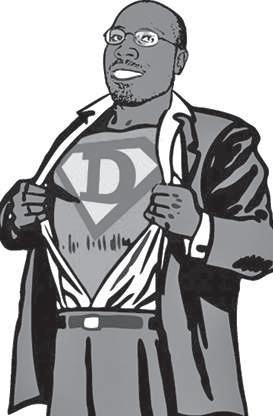
Derrick Docket, MVC associate commissioner for new media & technology, is the point person for the conference’s website, digital operations and social media.
relative 11 times.
“Totally random,” Bailey said in a ESPN interview. “It

but Bailey said he just wants to get on with his life – and that includes playing for the Los Angeles Rams when the season begins.
“I’m hoping I’ll be able to play this year,” Bailey said.
“I’ve met with a couple of neurosurgeons, I’m having CAT scans. There are no lingering effects. No dizziness. No headaches. When I tell doctors that, they are in awe.”
After a seven-hour surgery to remove bullet fragments lodged between his shattered forehead and brain, Bailey was hospitalized for a month.
Almost immediately after the surgery he began his stunning recovery.
“They thought it could be six months or more before I was walking. That wasn’t the case with me. I uploaded a video of me jogging around with my physical therapist while I was still in the hospital. Everyone thought it was amazing,” he said.
“I’m doing well. I gained back a lot of the weight I lost. I’m doing weight training, doing things they didn’t think I would be able to do already.”
Bailey said he planned “to hit the football field and run in cleats” on Monday afternoon.
50 shades of Gronk
The second three-day “Gronk Cruise,” with host New England Patriots tight end Rob Gronkowski, docked on Sunday after featuring more than 72 hours of wild partying, drinking and who knows what else.
The shirtless Gronk and his brothers were often on stage twerking the night away, and at one point he offered a couple $10,000 to have sex in the middle of a crowded dance floor.
This is the same Gronk who performed a “lap dance” on a female reporter during Super Bowl week in San Francisco and proudly told Jimmy Kimmel that he hasn’t read a book since ninth grade.
He’s a tremendous football player who is headed for all-time records and the Hall of Fame if injuries or debauchery don’t slow his roll.
But you have to ask yourself, “Would Gronk be known as the fun-loving free spirit that people adore if he were black?”
Unfortunately, I think we know the answer to that question.
doesn’t make sense why we were targeted.” No arrests have been made,
“It’s good to go back to football activities. I’m taking it a day at a time. Everything has been looking good,” he said. Regardless of how you feel about the Rams’ departure, it would be truly inspirational to see him introduced at the L.A. Coliseum next year and playing in a game.
Alvin A. Reid is a panelist on the Nine Network program, Donnybrook and appears on ABC’s The Allman Report and several sports radio shows. His Twitter handle is @aareid1.


Continued from B3
They want to win, and they want to play for themselves and play for their school.”
Harris-Stowe employs a fast-break, pressing style of basketball that keeps the tempo fast at all times. The Hornets are 11th in the nation in steals among National Association of Intercollegiate Athletics schools and eighth in 3-point percentage defense. They have two players who are among the top 20 nationally in steals.
“We are a pressing team, and we like to hang our hat on our defense,” Haden said. “We want to get up and pressure people and take them out of their game for 40 minutes. We want to generate easy points whenever we can.”
The Hornets have eight players who average at least 18 minutes per game. They are led by junior guard Angela Randall (North Tech), who averages 11.5 points and 4.3 rebounds while handing out a team-high 76 assists. Freshman guard Cierra Stanciel averages 11.4 points while hitting 37 3-pointers and registering a team-high 63 steals.
Sophomore guard Atlantis Sutton (Parkway North) averages 9.8 points a game while hitting a team-high 51 3-pointers on the season. Senior Monae Riley of a 5’11” post who averages seven points and a team-high seven rebounds a game. Junior guard Maronda Evans averages 8.5 points a game.
Continued from B3 has his hands too full with Wall Street and Republicans to notice the excessively shady moves being made by some of the most high-profile 1-percenters in the land. Shame on you NFL! Pacquiao left with bare foot in mouth
Manny Pacquiao’s race to irrelevance appears to be nearly complete. After dealing with reported money troubles and a lackluster showing in the biggest fight of his career, Pac-Man has his back on the
Continued from B3
2 p.m. - Top-seed Chaminade is the prohibitive favorite for the district and the state championship. Can the Red Devils break through this year in Columbia? Girls: Host St. Joes, McCluer North and Ladue should battle for the title.
District 7 (at Marquette): Championship, March 4, 6:30 p.m. - A very competitive district with top-seed Lafayette followed by Parkway Central and host Marquette. Girls: Top seed Washington advanced to the state quarterfinals last season.
District 8 (at Kirkwood), Championship Game, March 4, 6 p.m. - CBC is a solid favorite as the top seed with host Kirkwood and Parkway South looking to challenge. Host Kirkwood is looking to take that final step to the Final Four.
Class 4
District 3 (at Festus), Championship, March 3, 8 p.m. - Hillsboro is the No. 1 seed, but watch out for No. 2 seed Lutheran South as well. Girls: Very competitive field with Notre Dame, Festus and Lutheran South.
District 4 (at Westminster), Championship game, March 5, 6 p.m. - The host Wildcats are the No. 1 seed, but can get a competitive challenge from Parkway West, MICDS and darkhorse University City. Girls: Top seed MICDS will try to get back to the Final Four.
District 5 (at Vashon):

The Hornets entered the week with a 17-11 record and a 15-7 mark in AMC play, which is good for third place.
The Hornets also get contributions from sophomore guard Dynesha Powell (East St. Louis), who averages 4.7 points; 6’0” junior Shaakera Jones (5.9 points) and 5’11”
ropes again. He was recently dropped as a Nike endorser after commenting that gays are “worse than animals.” Pacquiao apologized for the remark and stated that he was simply quoting scripture and did not intend to offend anyone. This isn’t the first time Filipino fighter has had to apologize to the gay community. Back in 2012, it was erroneously reported that the former multi-division champion suggested that gays should be put to death. Pacquiao denied the claims, and the author of the original story backed up the fighter. Still, Pacquiao apologized for the confusion. However, he has not yet apologized for agreeing to a third match with Tim Bradley
Championship, March 4, 7 p.m. - Host Vashon is a solid No. 1 seed while Miller Career Academy and St. Mary’s are also in this loaded field. Girls: Miller Career Academy and Gateway Tech will battle for the title.

junior Khalilah Morrow (5.9 points, 5.2 rebounds).
Harris-Stowe may be one of the surprise teams in the AMC this season, but Haden came in with lofty goals and aspirations
on April. The bout will likely be Pacquiao’s last fight, but it’s also the last fight boxing fans wanted to see. Pacquiao had an opportunity to face a young, budding superstar in WBO Super Lightweight Champion Terence Crawford in a high-profile, highly anticipated bout. Like he’s done often at the tail end of his storied career, Pacquiao let promoter Bob Arum keep the money in house against a Top Rank opponent.
Clutch or Nah?
Clutch: The past week has been good for NBA scorers. Damian Lillard dropped 51 on Stephen Curry and the Golden State Warriors.
District 6 (at Normandy): Championship game, March 4, 6:30 p.m. - Another competitive field featuring topseeded Jennings, Riverview Gardens and Soldan. Girls: Three-time defending state champion Incarnate Word is rolling again.
for the season. “When we met before the season, we set a goal to win 20 games,” she said. “We wanted to defend our home court and win the conference tournament.
Anthony Davis dropped 59 points and 20 rebounds on the Detroit Pistons. James Harden dropped 42 points on the Utah Jazz. DeMarcus Cousins had back-to-back games of 37 points and 20 rebounds and 39 points and nine rebounds. I guess the big question is, does anybody play defense anymore?
Nah: Kimbo Slice vs Dada 5000 was one of the worst fights in the history of MMA. Both combatants used up all their mojo within the first 30 seconds and the rest of the fight was like one of those World Star videos with old, drunk uncles fighting over something that happened on an episode of Good Times. They
District 7 (at St. Dominic), Championship game, March 4, 8 p.m. - St. Charles West is the top seed with rival St. Charles and McCluer looking to challenge for the title. Girls: St. Charles is looking for another deep tournament run.
The 6’4” sophomore center led Metro to three victories last week with three dominant performances. Flowers had 20 points, 15 rebounds and 12 blocks in a 52-50 victory over Clayton. She had 23 points and five rebounds in a 76-18 victory over Northwest Academy. Flowers also had 27 points and 13 rebounds in a 55-25 victory over Kansas City Central. For the season, Flowers is averaging 16 points, 13 rebounds and a whopping seven blocks a game. She is also shooting 51 percent from the field.

We set our goals pretty high, but we are on pace to reach them.”
Harris-Stowe closes out its regular season with two home games this week. They will
flailed, snuggled and hugged until Dada collapsed to the ground in defeat.


continued from page B1
in the years ahead. According to the state of the St. Louis Workforce Report, an annual report published by the College in partnership with the Missouri Economic Research and Information Center (MERIC) and the Urban League, the region’s unemployment rate has been reduced from a high of 10.9 percent in October 2009 to the current rate of 4.6 percent. The number of unemployed in the St. Louis area has steadily dropped from 104,000 in 2013 to 84,000 in May 2015.
However, challenges still exist, as the St. Louis workforce is aging, with significant growth in the 55-64 and 65-plus age cohorts, which represented 21 percent of the workforce in 2014. As in past reports, nearly one-half of our region’s population 25 and over have a high school diploma but no postsecondary education. For the first time since the report was published in 2009, shortage of workers with knowledge or skills was the most frequently cited barrier to expanding employment by the 1,100 employers surveyed.
Equally perplexing, the events of the past two years in the St. Louis area remind us that the benefits of an improving economy have not been evenly distributed throughout our communities, with the U.S. unemployment rate for African-American male youth ages 16-19 at 31.1 percent, and the rate for African Americans with less than a high school diploma is at 17.2 percent. These rates are in some cases double those of the population at large.
In considering all of the data, and in meeting with over 100 community leaders in the past six months and listening to their perspectives, combined with close to 30 years of experience in the community college arena, I see St. Louis Community College as a solution to many of the challenges and the
opportunities that lie ahead for the region. I also see the college as a critical player in meeting one of the top higher education goals of the State of Missouri, to increase the proportion of working-age adults with high-quality, affordable postsecondary credentials to 60 percent by 2025.
cases, through state and federal aid, and/or assistance through the St. Louis Community College Foundation, attend college for little or no cost.
Certainly St. Louis Community College is not without opportunities for improvement, but what I have discovered here is a gold mine within the faculty and staff who are determined to fulfill the mission of the college, and to be a beacon of light and hope for the constituents of this area.

Barbara Gardner is employed at DePaul Health Center after completing St. Louis Community College’s patient care technician program.
Over the years, the United States has realized the significance that community colleges represent. They educate approximately 13 million students each year, and the majority of the country’s college freshman and sophomores are in community colleges.
Community colleges offer the public an incredible value. It is an opportunity for students to enroll in a lowcost education and learn from highly educated, experienced and dedicated faculty whose primary role is to teach within their subject area and prepare students directly for the workforce and/or further higher education.
It is also an opportunity for individuals to gain a valuable education without incurring a mountain of debt and, in many
We are well positioned to meet the increasing demand for skilled workers in manufacturing, technology, health care, bio-science and other high growth fields, the majority of which will require an associate’s degree. With over 1.2 million alumni, the college has proven itself on many fronts and will continue to be a leader among the multiple educational providers within St. Louis.
Congruent with the Aspen Institute’s College Excellence Program, the college’s completed Strategic Plan will undoubtedly contain elements of the key criteria of national best practices for critical community college outcomes, including completion of an associate’s degree or other meaningful credential, equity for minority and low-income students, assurance that learning outcomes occur relevant to the student’s program of study, and employment in well-paying jobs upon students’ completion of their credential.
I look forward to the journey of the coming years, and then looking back to see that St. Louis Community College was in fact a solution to many of the region’s challenges and successes.
Jeff L. Pittman is the chancellor of St. Louis Community College, an adjunct professor at Indiana State University in Higher Education Leadership, and vice chair of the Missouri Community College Association’s Presidents/Chancellors Council.



By Kenya Vaughn
Of The St. Louis American
“We get to show how the blues started down in Mississippi and then moved up through Memphis, Chicago, Detroit, St. Louis and even Canada going north and California going west,” said National Blues Museum Executive Director Dion Brown.
“The blues has so many sounds –and it changes depending on where you live.”
St. Louis Blues will be center stage when Ballpark Village hosts The National Blues Museum Showcase Saturday night.
The free concert is The National Blues Museum’s first-ever public live music event and will feature live performances from three St. Louisbased artists.
Legendary harmonica player Big George Brock, Marquise Knox and blues rock band Phi will offer a taste of their respective brands of blues.
“We are thrilled to have the opportunity to work with Ballpark Village in order to present the history and future of blues music, and to educate others on the importance of this moment,” Brown said. With this concert, The National Blues Museum will also highlight

the diversity within the genre that laid the foundation for all American music– from country, rock, R&B, soul, funk and hip-hop. Brock began playing harmonica at 8 and has been singing since he was 12. He has shared the stage with
many blues musicians over the course of his career, including Muddy Waters, Howlin’ Wolf, and Little Milton. Brock performs regularly at concerts and festivals with his band

Andres L. Hernandez and Amanda Williams among Pulitzer’s PXSTL finalists
By Kenya Vaughn Of The St. Louis American
“We’re from places that in many ways look a lot like St. Louis,” said artist and educator Andres L. Hernandez.
“In contemplating how we might approach this project, we really are hoping to explore how we might be able to learn to consider urban vacancies as sites with infinite possibilities.” Hernandez and his architectural partner Amanda Williams are both natives of Chicago. They are hoping that their common ground of being rooted in blighted urban areas will give them the competitive edge as the Pulitzer Arts Foundation and Sam Fox School of Design & Visual Arts at Washington University select the winning design team for the PXSTL project. Organized by the Pulitzer and the Sam Fox School, PXSTL is a competition for a design-build commission to create a temporary structure, landscape strategy or other design intervention that will transform a vacant lot into a site for community-based programming. On Monday, February 15 they presented their project along with the two other finalists – Merve Bedir and Jason Hilgefort, of Randstad, Netherlands, and Istanbul; and Mary Ellen Carroll, of New York and


of “And In This Corner…Cassius Clay.”
Metro Theater Company uses Cassius Clay’s youth to inspire audiences
By Kenya Vaughn Of The St. Louis American
“There are two types of fighters in this world. There’s the fighter who fights for himself, and there is the fighter who fights for those who can’t. Which one are you gonna be?”
When Cassius Clay’s childhood friend Eddie posed the question to him in Metro Theater Company’s production of “And In This Corner… Cassius Clay,” the rising star defiantly proclaims that he will be both.
The future boxing icon – which the world would later come to know as Muhammad Ali – went above and beyond his original promise.
With Idris Goodwin’s play, Metro Theater Company gives local young people an opportunity to see him lay the foundation to do so – and offers teachable moments about the Civil Rights Movement that ran parallel to Clay’s formative years in his native Louisville Kentucky. The play will continue through February 28 at The Missouri History Museum.
“We wanted a play where people would both recognize themselves and want to be more than they are,” said Julia Flood, the play’s director and Metro Theater Company’s artistic director.
Clay found his passion early in life through boxing. But as a young boy growing up on the cusp of one of the nation’s most tumultuous and polarizing times in the Jim Crow South, he had to fight harder to be seen See CLAY, C4

Houston. After an international call for nominations, these were the last designers standing. Hernandez and Williams stood
out among the group because of
How to place a calendar listing
1. Email your listing to calendar@stlamerican. com OR
2. Visit the calendar section on stlamerican.com and place your listing
Calendar listings are free of charge, are edited for space and run on a space-available basis.
Fri., Feb. 26, 2 p.m., St. Louis Freedom Struggle 1821-1968, St. Louis County Library – Grant’s View Branch, 9700 Musick Rd. For more information, visit www.slcl.org/black-historycelebration.
Fri., Feb. 26, 7 p.m., A Call to Conscience presents “I’ve Been To The Mountaintop” Reader’s Theatre in Five Voices, Word on Shaw, 4265 Shaw Blvd (at the corner of Shaw and Tower Grove).
Feb. 26 – 27, Touhill
Performing Arts Center hosts the Dance St. Louis presentation of New Dance Horizons IV: A Celebration inspired by St. Louis’ Legendary Black Artists. In celebration of Black History Month, three nationally renowned African-American choreographers create three new works inspired by legendary St. Louis AfricanAmerican artists. Each choreographer is paired with a local professional dance company, including three Alvin Ailey American Dance Theatre principal dancers, to create the three unique world premieres. 1 University Blvd., 63121. For more information, visit www.touhill.org or dancestlouis.org
Sat., Feb. 27, 10 a.m., St. Louis County Library presents Tracing Your African American Ancestors, St. Louis County Library - Lewis & Clark, 9909 Lewis-Clark Blvd., 63136. Registration required. For more info or to register: www. slcl.org or call (314) 994-3300.
Sat., Feb. 27, 11 a.m., The Greater St. Louis Alumni Chapter of Lincoln University hosts Greater St. Louis Alumni 150th Founder’s Day Luncheon. 9801 Natural Bridge, 63134. For more information, visit
www.lincolnu.edu.
Saturdays, Through Feb. 27, 11:30 a.m., Teens Make History presents Looking for Dunham. It’s a slow news day for the paper’s entertainment reporters when rumors that the great Katherine Dunham is in town start to circulate. Will they ind Miss Dunham before the TV journalists get the scoop? Missouri History Museum, 5700 Lindell Blvd., 63112. For more information, visit www.mohistory.org.
Sat., Feb. 27, 1 p.m., AVisit With The King of Ragtime, St. Louis Public Library –Walnut Park Branch, 5760 W. Florissant.
Sat., Feb. 27, 1 p.m., Gospel Artists, St. Louis County Library – Florissant Valley Branch, 195 New Florissant Road S. For more information, visit www.slcl.org/blackhistory-celebration
Sun., Feb. 28, 9:30 a.m., Calvary Missionary Baptist Church presents Black History: Our Heritage On Stage, presented by the Calvary Missionary Baptist Church Sunday School Department , 2822 Dr. Martin Luther King Drive St. Louis, Missouri 63106.
Through Feb. 28, African American Inventions Exhibit, St. Louis County Library – Thornhill Branch, 12863 Willowyck Drive. For more information, visit www.slcl. org/black-history-celebration
Feb. 28, 8 p.m., Gary Clark
Jr. - The Story of Sonny Boy Slim Tour, The Pageant, 6161 Delmar. For more information, visit www.thepageant.com, www.ticketmaster.com or call (314) 726-6161.
Mar. 2 – 5, Jazz at the Bistro presents James Carter Organ trio. 3536 Washington Ave., 63103. For more information, visit www.jazzstl.org.


The Pageant welcomes Gary Clark Jr. – The Story of Sonny Boy Slim Tour. See CONCERTS for details.
Sat., Feb. 27, 8 p.m., Blank Space presents FEMFEST
2: All Females Hip Hop Showcase. This showcase will feature and pay homage to some of the dopest female emcees in and out of St. Louis. 2847 Cherokee St., 63118. For more information, visit www.slumfest.com/femfest2.
(See Local Gigs)
Sun., Mar. 6, 4:30 p.m., Morehouse College Glee Club in Concert, Carr Lane Visual and Performing Arts Middle School Choir and Normandy High School Quintet, Carr Lane Visual and Performing Arts Middle School, 1004 N. Jefferson St. Louis, Missouri 63106. To purchase tickets call (314) 265-8556 or email: maryharperthomas@gmail. com.
Sat., Feb. 27, 7 p.m., Ballpark Village presents National Blues Museum Showcase. In anticipation of the grand opening on April 2, the National Blues Museum has partnered with us to host its irst-ever public live music event. This event is free and open to the public, and will feature live performances from three St. Louis-based artists: blues rock band Phi, guitarist Marquise Knox, and legendary harmonica player Big George Brock. 601 Clark Ave., 63102. For more information, visit www.facebook.com.
Sat., Feb. 27, 8 p.m., Blank Space presents FEMFEST 2: All Females Hip Hop Showcase. This showcase will feature and pay homage to some of the dopest female emcees in and out of St.
Louis. There will be live performances by Bates, Truthdoit, Donesty & MZ. Tigga, and many more. 2847 Cherokee St., 63118. For more information, visit www. slumfest.com/femfest2.
Thurs., Feb. 25, 5:30 p.m., St. Louis American Foundation’s 6th Annual Salute to Young Leaders Networking and Awards Reception, The Four Seasons Hotel. For more information, call (314) 533-8000 or visit www.stlamerican.com
Thurs., Feb. 25, 5:30 p.m., The Arcus Awards , Hyatt Regency St. Louis Arch. For more information, visit www. arcusawards.com or call (314) 444-1109.
Sat., Feb. 27, St. Louis County Library presents Balloon Twisting, Learn how to twist a basic balloon dog, a simple hat, a huge octopus and more. Presented by Circus Kaput. Ages 8-12. Registration required. St. Louis County Library - Lewis & Clark, 9909 Lewis-Clark Blvd., 63136. For more info or to register: www. slcl.org or call (314) 994-3300.

Sat., Feb. 27, 6 p.m., The Monsanto YMCA Tuxedo and Tennis Gala, America’s Center Ballroom. For more information, call (314) 3674646.
Sat., Feb. 27 7 p.m., The Mandarin House hosts 1st annual Mardi Gras Hangover party. BYOB event & VIP tables available. 8008 Olive, 63130. For more information, call 314-229-5267 or 314-496-7959.
Mon., Feb. 29, 7 p.m., 2016 Black History Celebration presents Blues Unlimited: Essential Interviews from the Original Blues Magazine St. Louis County Library Headquarters, 1640 Lindbergh Ave., 63131. For more information, call (314) 9943300 or visit www.slcl.org.
Fri., Mar. 4, 7:30 p.m., Public Meeting for Sigma Gamma Rho Sorority, Inc. 76th Central Region Conference - The Unbreakable Power of Vision, Voice and Virtue, America’s Ballroom, 2nd Floor, America’s Center Convention Complex, 701 N. Convention Plaza.
Sat., Mar. 5, 6:30 p.m., The Ritz-Carlton St. Louis host SouthSide Gala Dinner and Auction. 100 Carondelet Pl., 63105. For more information, visit www.southside-ecc.org.
Sat., Mar. 12, 8 p.m., The Upsilon Omega Chapter of Omega Psi Phi present their annual Mardi Gras MasQUErade Affair Dance Fundraiser, Omega Center 3900 Goodfellow.
Mon., Mar. 14, 7 p.m. (5 p.m. reception), Urban League of Metropolitan St. Louis’ 98th Annual Dinner Meeting, this year’s theme is Roadmap to Equality: Empowering Communities, Changing Lives with keynote address provided by Dr. Michael Eric Dyson, Marriott Grand Hotel, 800 Washington Ave. For more information, visit www.ulstl. org or call (314) 615-3668.
Through Mar. 27, Missouri Botanical Gardens hosts 2016 Orchid Show: Where the Wild things Grow. Approximately 500 orchids are on display at any one time. This year’s Orchid Show offers visitors the chance to learn more about the habitats of orchids and how they adapt to changing environments. 4344 Shaw Blvd., 63110.For more information, visit www.mobot. org
Apr. 29- May 1, HarrisStowe State University presents the Inaugural Male Empowerment Summit, hosted by Dr. Dwaun J. Warmack and featuring Pastor Jamal Bryant and Dr. Steve Perry.
Fri., Feb. 26 8 p.m., The
Chaifetz Arena presents Katt Williams: The Conspiracy Tour. 1 South Compton Ave., 63103. For more information, visit www.thechaifetzarena. com.
March 12, 8 p.m., The Comedy Getdown starring Cedric ‘The Entertainer’, Eddie Griffin, D.L. Hughley, George Lopez and Charlie Murphy, Scottrade Center. For more information, visit www.ticketmaster.com
Sat., Feb. 27, 1 p.m., The Griot Museum of Black History hosts author Theresa E. Cobb, author of UNCLOSETED LOVE, a romantic thriller. 2505 St. Louis Avenue. For more information, call (314) 8680233.
Tues., Mar. 1, 7 p.m., St. Louis County Library presents Bobby Norfolk “Eye to the Sky: Storytelling on the Edge of Magic. Library Headquarters, 1640 S. Lindbergh Blvd., 63131. For more information, call (314) 994-3300 or visit www.slcl. org.
Thurs., Mar. 3, 7 p.m., Left Bank Books hosts author Amina Gautier, author of The Loss of All Lost Things. 399 N. Euclid, 63108. For more information, call (314) 3676731 or visit www.left-bank. com.
Thurs., Feb. 25, 12 noon, Gitana Productions presents “New World,” a one-act play about women refugees from Afghanistan, Bosnia and the Republic of the Congo. St. Louis Community College at Meramec, Meramec Theater, 11333 Big Bend. Free admission and parking. For more information, visit www. gitana-inc.org or call Gitana Productions at (314) 721-6556
Saturdays, Through Feb. 27, 11:30 a.m., Teens Make History presents Looking for Dunham. Missouri History Museum, 5700 Lindell Blvd., 63112. For more information, visit www.mohistory.org.
Through Feb. 28, Metro Theatre Company presents And in This Corner… Cassius Clay. Based on the early life of Muhammad Ali in Jim Crow Louisville, the play tells the story of a young man who believes his potential is unlimited despite the segregation and racism he is surrounded by. Missouri History Museum, 5700 Lindell Blvd., 63112. For more information, call (314) 9327414 or visit www.metroplays. org.
Feb. 27-28 Powell Symphony Hall presents Midsummer


Night’s Dream. Journey to the land of forbidden love with Mendelssohn’s A Midsummer Night’s Dream. Hans Graf leads the enchanting incidental music to Shakespeare’s beloved play, with actress Maureen Thomas portraying vignettes from the drama on the Powell Hall stage. 718 N. Grand blvd., 63103. For more information, www. stlsymphony.org.
Through Mar. 6, The Repertory Theatre of St. Louis presents Disgraced. Successful corporate lawyer Amir Kapoor is Pakistani born, but he long ago distanced himself from his roots to embrace life as a slick New Yorker. 130 Edgar Rd., 63119. For more information, call (314) 968-4925 or visit www. repstl.org.
Fri., Feb. 26, 6 p.m.
SLAM Underground, Hourly collection tours, an interactive Art Lab, and cocktails will be available to round out the evening. St. Louis Art Museum, Forest Park, St. Louis, MO. For more info, visit http://slam.org
Tues., Mar. 8, 7 p.m., Contemporary Art Museum presents Picturing Women With Lisa Yuskavage’s paintings of the female body as the backdrop, Second Tuesdays will give a special presentation through a night of storytelling. Eight speakers share personal stories exploring feminine identity, sexuality, gender roles, and the body. 3750 Washington Blvd., 63108. For more information, call (314) 535-4660 or visit www.camstl.org.
Through Mar. 13, COCA presents Carl Richards: Money. Visualized. Carl Richards, author and creator of the weekly “Sketch Guy” column in the New York Times, makes complex financial concepts easy to understand through his
elegantly simple sketches. This interactive installation invites visitors to create sketches, notes, and diagrams charting their own goals and realities. There will be an opening on Jan. 15 at 6 p.m. 524 Trinity Ave., 63130. For more information, call (314) 7256555 or visit www.cocastl.org.
Through March 19, Pulitzer Arts Foundation hosts Kota: Digital Excavations in African Art. 3716 Washington Blvd., 63108. For more information, visit www. pulitzerarts.org.
Thur., Feb. 25, 7:30 a.m., COCA bizSession presents Carl Richards: Creative on Purpose. 524 Trinity Ave., 63130. For more information, call (314) 725-6555 or visit www.cocastl.org.
Sat., Feb. 27, 8 a.m., Webster University hosts 5th Annual St. Louis ProductCamp. ProductCamp is a unique opportunity for anyone who designs, builds, markets, or manages a product or service. This camp helps you learn and build some opportunities that will take you and your company far. You choose which sessions you would like to participate in. In past years there have been more than 30 sessions to choose from to suit your preferences. The event is free to attend. 545 Garden Ave., 63119. For more information, visit www.stlpm. org.
Sat., Feb. 27, 11 a.m., It’s a Savings Affair – Family Fun Time, Bring the family for some fun learning and sharing ideas and best practices about money and savings! Enjoy free activities and refreshments, ind out about standard and special banking products and services, and other resources to assist you with your savings goals. Families will enjoy

games like Money Bingo and get to decorate their own banks to take home! Free and open to the public, pre-registration not required, but highly preferred. For more info or to register: (314) 925-0750 or contact@ raacommittee.org. Online registration also available at http://raacommittee.org.
Sat., Feb. 27, 3 p.m.,
Education 4 All presents Author Showcase and Book Fair. Featured local authors & entrepreneurs Mrs. Lydia Douglas and Mr. Odie Smith will present workshops about their books, writing, and publishing. These and other authors will be available to autograph purchased copies of their books during the event. Registration is required. 20 S. Sarah, 63108. For more information, call (314) 397-8757 or visit www. education4allinc.com.
Tues., Mar. 8, 5 p.m., William J. Harrison Education Center hosts FAFSA Frenzy. Need help completing the Free Application for Federal Student Aid? This free event will offer students and their parents an opportunity to meet one-on-one with inancial aid advisors for assistance in illing out the FAFSA,

Touhill Performing Arts Center hosts the Dance St. Louis presentation of New Dance Horizons IV: A Celebration inspired by St. Louis’ Legendary Black Artists. For more information, see BLACK HISTORY MONTH ACTIVITIES.
the irst step in applying for federal student aid. Attending students will also be able to enter for a chance to win a scholarship for the fall 2016 term at a college, university, or other postsecondary school in Missouri. 3140 Cass Ave., 63106. For more information, call (314) 763-6000 or email HEC-Advising@stlcc.edu.
Mar. 11, 11:30 a.m., The Boys & Girls Clubs of Greater St. Louis will hold its annual women leaders lunch, Table for Four. The Chase Park Plaza. For more information, visit www.bgcstl.org.
Sat., Mar. 19, 9:30 a.m., Woman’s Place will offer a free workshop, Building Boundaries, Learn how one’s boundaries are shaped and ways to set personal boundaries of your choosing. 8300 Morganford Road in Affton. All women are welcome. Pre-registration is required. Call 314-645-4848 to reserve your place.
Sat., Mar. 5, 9 a.m., BJC Hospice presents Neighbors Helping Neighbors: Learn About Hospice Volunteering
Your neighbors need your help. St. Andrew United Methodist Church, 3975 N. Hwy. 67, 63033. For more information or to RSVP, call (314) 953-1671 or email HospiceVolunteer@bjc.org.
Sat., Apr. 30, St. Louis PKD Chapter is hosting a Kidney Fight Trivia Night Fundraiser. Machinists’ District 9 Building, 12365 St. Charles Rock Road, Bridgeton, MO 63044. Contact Kris Conant at kidneyfighttrivianight@gmail. com or call 314-973-6597 to register.
Feb. 26-27, Flame Of Fire Ministries presents ‘The Making Of A Leader Leadership Conference Workshop & Luncheon. Presenters will teach The Principles of leadership in workshops on Selective Leaders, Authorization Of The Ministry, Three Ways Spiritual Leaders Are Appointed, Divine Calling, and Season Of Preparation. Renaissance St. Louis Airport Hotel, 9801 Natural Bridge Rd., 63134. For more information, visit www. kossuthcogic.org.
Sun., Feb. 28, 5 p.m. doors, Saint Paul AME Church Social Action, YAM, YPD and Host Event & Urban Marketing Co. present Sweet 2K16 Launch Party Expo, The Cathedral, 1260 Hamilton, St. Louis MO. Fri., Mar. 4, 7 p.m., River of Life Family Church, TV 50 and Southern Gospel 4 U Concert Series presents “Lineage of David” From Oklahoma, For more information call Hosts Tom and Sheron @ 618-616-2815 or email southerngospel4u@ aol.com. Visit www. southerngospel4u.org www. lineageofdavid.com
Through Mar. 31, 9 a.m., AARP Tax Assistance Eligible Seniors may call the AARP tax help line and schedule an appointment for free tax preparation assistance. St. Louis Public Library, Buder Branch, 4401 Hampton Ave., 63109. For more information or to register, call (314) 525-1660. Through Apr. 11, University of Missouri St. Louis hosts Volunteer Income Tax Assistance. St. Louis Public Library, Schlafly Branch, 225 N. Euclid Ave., 63108. For more information, call (314) 367-4120 or visit www.slpl. org.
Through Apr. 11, 12 p.m., AARP Tax Help. St. Louis Public Library, Kingshighway Branch, 2260 S. Vandeventer Ave., 63110. For more information, call (314) 5251660.
Through Apr. 15, 10 a.m., AARP Tax Aide. We will provide free tax preparation assistance throughout this tax season by appointment only. St. Louis Public Library, Julia Davis Branch, 4415 Natural Bridge Ave., 63115. For more information or to register, call (314) 525-1660.

Continued from C1
their work in urban, vacant neighborhoods. A slide in their presentation featured Hernandez standing in a vacant lot. He used rubbish from adjoining lots to make a frame for the photograph. His childhood home stood there until 2011.
“It’s about using art –but things that don’t look like art – and really finding ways to create sculptures, but more so moments of conversation,” Hernandez said. “It’s repurposing to address the phenomenon of urban vacancy.”
In their native Chicago, they have turned urban vacancy into public art spaces to host community dialogue sessions. They commissioned artists to do pop-up installations and galleries in these settings to engage the neighborhoods. They organized festivals to restore the sense of community.
“The idea was really to think about what we might do to generate – or revive – conversation about development in urban areas,” Hernandez said.
“We wanted things to be open for dialogue and really think about what might our work be as artists and designers beyond the work that we’ve done,” Williams said. They have done this work in Woodlawn, the neighborhood that inspired Lorraine Hansberry’s “A Raisin in the Sun” and locus of a Supreme Court ruling that helped to dismantle racially restrictive covenants in real estate.
“I really had to understand how my environment inspired me to want to become an
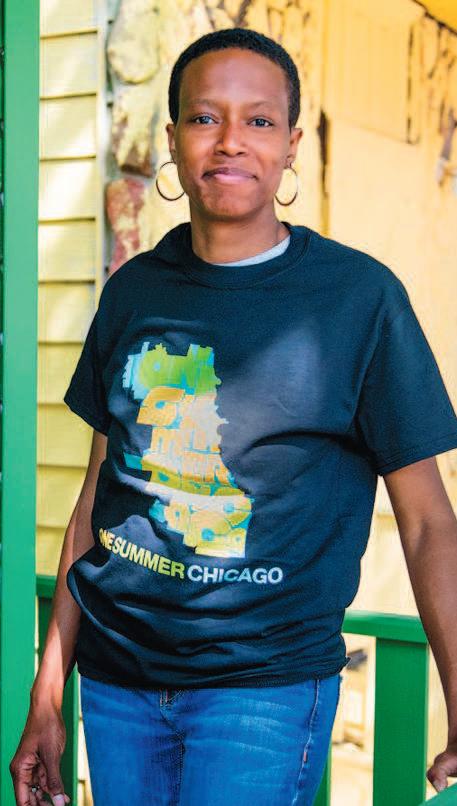
architect,” Williams said. “How would I take this very westernized education and go back to 79th and Ashland where my nursery school is now a liquor store? I had to understand the unique ability I had to lend a voice to that visually.”
Out of her understanding came “Vacancy: Urban Interruption and (Re) generation” and her “Color(ed) Theory series.” Williams, Hernandez, a crew of artists and volunteers from the neighborhoods repainted dilapidated homes in vivid colors from a palate familiar to the ‘hood. They used Newport green, Cheetos orange, Crown Royal bag purple – color connotations some might see as negative or stereotypical, now repurposed as beacons of color.
“I was actually taken aback with how it resonated with so many people on so many levels,” Williams said. “Community meant something

very different in that moment for me.”
She feels the project could serve as a prototype for reimagining other sites around the country.
“As somebody from these kinds of neighborhoods, there’s a moment of frustration in which there has to be an accountability of the community itself – not only with understanding the systems which create these situations, but also at some point we have to figure out what ownership we can take,” Williams said.
“It’s about finding what might happen in the meantime while we are waiting on redevelopment.”
The winning designer for the PXSTL project will be announced in late February or early March. The team will lead students from the Sam Fox School to develop the structure, which is set to open in Spring 2017. For more information, visit www.pulitzerarts.org.
Continued from C1
The New House Rockers.
At only 24, St. Louis native Marquise Knox has already claimed a foothold in the land of the blues. His debut album, “Manchild” was recorded when he was 16 and received the “Best Debut Artist” award from Living Blues Magazine. He has shared the stage with such legends as the late great B.B. King and David “Honeyboy” Edwards.
The six-member ensemble Phi have taken notes from the likes of the Rolling Stones and Janis Joplin – rock icons with influences rooted in the blues – to create their own unique sound.
In essence, the musical revue will illustrate the purpose and relevance of the organization in addition to being a preview to keep the National Blues
Museum top of mind as they prepare to officially open this April.
“This night is a great opportunity for the city to come out and see what we will have to offer to the public,” Brown said.
Already voted as a top travel destination by the New York Times Smithsonian Magazine and CNN, The National Blues Museum is the only institution of its kind dedicated exclusively to preserving and honoring the history and legacy of Blues music and its impact on American and world culture.
“The Blues has so many sounds,” Brown said. “And by us being The National Blues Museum, it gives us a chance to explore all of them.”
The National Blues Museum Showcase will begin at 7 p.m. on Saturday, Feb. 27 at Ballpark Village, 601 Clark Avenue.
Concert attendees will have the opportunity to purchase
annual memberships to the National Blues Museum, which begin at $50. For more information, visit www.nationalbluesmusem.org or call (314) 925-0016.
Rockin’ the blues in April
On April 1, the eve of the grand opening of the National Blues Museum, Brock will return to the stage on behalf of the organization along with Bobby Rush and Shemekia Copeland for the Rock’N Blues Benefit Concert at Lumiere Live.
The evening will be emceed by Big Llou Johnson, the host of Sirius XM’s Bluesville channel.
Rock’N Blues Benefit Concert will take place at 7:30 p.m. on Friday, April 1 at Lumiere Live (inside the Lumiere Casino). Tickets are available by calling the National Blues Museum at (314) 925-0016.


The cast of Metro Theater Company’s production of “And In This Corner…Cassius Clay.”
Continued from C1
as worthy of basic human rights than he ever did in the ring.
Through the play, audiences will see how his sport and his circle of friends influenced him to use his platform to express black pride and demand racial equality. They will also get snapshots chronicling his ascension through Louisville’s local youth boxing scene and a national champion on the amateur side of the sport. The play covers the period in Clay’s life from the moment he discovered boxing to his return from the Rome Olympics in 1960.
n “And In This Corner” consists of a well-meshed ensemble of actors to bring Clay’s story to life.
Cassius Clay, “And In This Corner” consists of a wellmeshed ensemble of actors to bring Clay’s story to life. Morgan proves up for the challenge in the anchor role –including Goodwin’s twist to give the audience additional insight on the thoughts and feelings of young Clay. Monologues are delivered in the signature rhyme style that made Clay a media sensation –probably to break the monotony of a traditional play for the sake of the attention span of the young audience.
The post-script for Clay’s Olympic victory is not unlike other African American athletes prior to the Civil Rights Movement. They shined when selected to represent America on a global stage, but returned to the sober reality of being treated as second-class citizens instead of American heroes.
According to the play, that experience for Clay was the defining moment where his passion created the path to his purpose.
Before Rome, activism took a backseat to athleticism. Afterwards, he boldly displayed his blackness inside and outside of the ring and became a champion of the people as well as his sport’s most famous Heavyweight Champion of the World.
Led by Trigney Morgan as
There’s an authentic chemistry among the cast, specifically Clay’s nuclear family (Phillip Dixon as Cassius Clay, Sr. Jeanitta Perkins as Odessa Clay and Nicolas Tayborn as Rudy Clay). Carl Overly resonated especially well with the crowd for providing comic relief as the neighborhood bully Corky Baker, who actually helped Clay build his confidence in the ring. The ultimate take away is to encourage the audience to use life’s obstacles to channel their inner champion – which resides in everyone –and fight for what’s right. Metro Theater Company’s production of “And In This Corner…Cassius Clay” continues through February 28 (Fridays and Saturdays at 7:30 p.m. and Sundays at 2 p.m.) at the Missouri History Museum. For tickets or more information, visit www.metroplays.org or www. mohistory.org.


Congratulations to Carlyncia McDowell, a senior at Fort Zumwalt East High School, who was selected for membership in The National Society of High School Scholars. The Society recognizes top scholars who have demonstrated outstanding leadership, scholarship and community commitment.
Beaumont High School
Class of 1971 is planning its 45th year reunion for July 22-24, 2016.Please send your contact information (address and phone number) to Gladys Smith at beaumont1971alumni@aol. com.
Soldan Class of 1971 is planning its 45th year reunion for: June 17-19, 2016 at the Ameristar Casino Resort & Spa, One Ameristar Boulevard, St. Charles, Mo 63301.
Soldan Class of 1976 reunion will be held June 10-12, 2016. For more information, email soldanclassof1976@yahoo. com or Facebook: Soldan High School Class of 1976.
Sumner Alumni Association hosts its 13th Annual RoundUp of Sumner Alumni Sunday, February 28, 2016, 1-4 pm at Sumner High School. Theme: “Climbing Jacob’s Ladder” with Special performances by Sumner Alumni and non-Sumner
Princess Payton Marionna Byrth rode the Amtrak to Chicago on February 15 to visit the American Girl Store and pick up her doll for her 8th birthday. Happy Birthday from your G-Vanessa and Mom Shonie!
Look who’s turning 50! Happy Birthday to Andrea Valley on February 28!
Mr. and Mrs. Terrance Neal are pleased to announce the upcoming marriage of their daughter, Breianna Neal to Karlos Harbor. The nuptials will take place on April 10 at Trinity Mount Carmel Church.
Alumni. Reception with entertainment: 12:45-1:45 pm in the gym with displays, souvenir items, photographer and more. New, Renewal, and “Climbing Jacob’s Ladder” (Lifetime) for alumni memberships accepted in the foyer. Program: 2 pm in the auditorium. Vendors are welcome ($50 in advance); contact B. Louis at 314.385.9843 for Vendor Form or Flyer at: sumneralumniassn@yahoo. com. John House, Chairperson 314.420-3442.
Sumner High School Class of 1966 is planning their 50th Class Reunion. Please contact Ella Scott at 314-436-1696, Els2188@sbcglobal.net with




your name, address and email or join the Sumner Class of 1966 Facebook Group page.
University City High School Class of 1976 is planning its Fabulous 40th year class reunion for June 24-25, 2016. We need your contact information. Please email your information to: weareuc76@ gmail.com or call the UCHS Class of 76 voicemail at 314301-9597.
University City Class of 1981 35th reunion will be August 5-7, 2016. Please send your contact information to Denise Weatherford -Bell at msdenise38@yahoo.com.
Vashon January and June Classes of 1966 will celebrate our 50 year reunion October 7-9, 2016 at the Hollywood Casino, 777 Casino Center Drive, Maryland Heights, MO 63043. Contact Marilyn Stuckey, Chairperson, 314-438-8338, email: masystucup@att.net or Janice Holland, Co-Chairperson, 314-727-1695, email: jholland1695@att.net for more information.
Vashon Class of 1986 will be celebrating its fabulous 30th Class Reunion in beautiful Las Vegas Nevada, July 21-23, 2016. For more information contact, Claudette at 314 3681502 or cctreze@att.net.
Do you have a celebration you’re proud of? If so we would like to share your good news with our readers. Whether it’s a birth, graduation, wedding, engagement announcement, anniversary, retirement or birthday, send your photos and a brief announcement (50 words or less) to us and we may include it in our paper and website – AT NO COST – as space is available Photos will not be returned. Send your announcements to: kdaniel@stlamerican. com or mail to: St. Louis American Celebrations c/o Kate Daniel 2315 Pine St. St. Louis, MO 63103 FREE OF CHARGE
Reunion notices are free of charge and based on space availability. We prefer that notices be emailed to us! However, notices may also be sent by mail to: Kate Daniel, 2315 Pine St., St. Louis, MO 63103 Deadline is 10 a.m. on Friday. If you’d like your class to be featured in a reunion profile, email or mail photos to us. Our email address is: reunions@ stlamerican.com

The Faith and Race podcast, brought to you by the Center for Social Empowerment and Justice is designed to help churches of all colors host constructive dialogue about faith, race and the church. Every episode has a specific focus to help people intentionally think about the intersection of history, institutions, scripture, prayer, race, and justice. The audio recordings will bring diverse insights and experiences into churches, homes, and hearts across Missouri and beyond.
For Season One, all of the interviewees are African-American Methodists from Missouri. Each has a powerful story to tell. The podcast will consist of 20-25 minute interviews released each Wednesday and started February 10. Interviewees for season one:
• Rev. Cody Collier: Why We Need to Talk About Race (February 10)
• Arnold Parks and John Wright: The Past’s Presence (February 17)
• Leah Gunning Francis: Ferguson and Faith (February 24)
• Rev. William L. Johnson, III: Black Theology (March 2)
• Patricia Flernoy: White Flight and the Story of a Black Female Police Officer (March 9)
• Rev. Cassandra Gould: Institutional Racism and Justice Movements, Then and Now (March 16)
• Lealure Tindall: Racial Justice in Rural Settings (March 23)
• Rev. Tina Harris: Who Are We and Who Can We Be? (March 30).
The Center plans to broaden its scope and further diversify its guests after this initial season.
In addition to the podcast, a Faith and Race small group curriculum will be available to help guide groups to discuss

Connor Kenaston, Faith and Race podcast host and young adult missionary for the United Methodist Church, interviews Rev. Cassandra Gould for a podcast that will air March 16.
the issues raised in each episode and what these issues might look like in their church or community. The materials for each session include pause points and discussion questions to aid in meaningful engagement with each interview. The finalized version
n “The discussion of race is essential if we’re truly to be the hands, heart, and face of Jesus Christ in a very sometimes violent and divisive time.”
– Rev. Cody Collier
of the curriculum will be ready by early to mid-March, but a simplified version will be ready on a week-to-week basis along with the podcast. The podcast and curriculum are firmly grounded in prayer and scripture,
and provide a safe, meaningful way for Christians to host what can be a challenging conversation, organizers said.
In the words of the first interviewee, Rev. Cody Collier: “The discussion of race is essential if we’re truly to be the hands, heart, and face of Jesus Christ in a very sometimes violent and divisive time.”
The Center for Social Empowerment and Justice is a hub for community solutions, study of urban context issues and exploration of ethical faith formation and practice. The Center will be housed in the educational annex of Wellspring Church in Ferguson.
Subscribe to the free podcast on iTunes: https://itunes.apple.com/ us/podcast/faith-and-race-podcast/ id1079664431. Write to faithandracepodcast@gmail. com for your copy of the Small Group Curriculum.
Get the latest updates on Facebook: www.facebook.com/ faithandracepodcast.
I remember reviewing the letters of Paul in Bible study. In doing so, I was constantly reminded that one cannot look at Paul without really seeing Jesus’ amazing handiwork.
I think Paul is an awesome person when it comes to the story of his life. I haven’t found a biography or autobiography of anyone in or outside of the good book who comes close to my admiration for Paul, Jesus notwithstanding. Because the two are so closely associated with one another, I can’t help but consider the impact of this tandem on human history.
A very large part of the Bible is devoted to Paul’s building of the early church at a time when who you worshipped was a life and death decision. Paul himself says, in his letters to the church in Corinth, there was a point to his suffering and persecution and what he went through was a byproduct of his faith in Jesus Christ.
“But He said to me, “My grace is sufficient for you, for my power is made perfect in weakness. Therefore I (Paul) will boast all the more gladly about my weaknesses, so that Christ’s power may rest on me. That is why, for Christ’s sake, I delight in weaknesses, in insults, in hardships, in persecutions, in difficulties. For when I am weak, then I am strong.” 2 Corinthians 12:810.

This kind of thinking and belief led to the eventual proliferation of the church worldwide. It also makes the point of how the lives of so few have impacted and influenced so many.
Paul is who he is because of his unique one-on-one encounter with Christ. That encounter changed him and ultimately the world in which we live. If that be true, then our individual encounters with Christ should also have a profound effect on us and the world.
It is not unusual for new Christians to come under attack by old friends. It is also not unusual for new Christians to come under the attack of the world, since it is in the world where Satan has power. I think Paul’s good news is there is a place of refuge when this happens.
He uses himself as an example to follow. If I surrender my weaknesses to the power of Christ and subjugate my will to that of the Lord’s, then I become empowered to deal with whatever is thrown my way. Life, the Christian life, is funny that way. It places a bulls eye on your back, designed to distinguish you from those non believers around you. Your faith also sets you up and apart to do great things in the name of Jesus Christ. When the going gets extremely tough, check the human being Paul. Like Christ, he’s been through the worst that life has to offer. But because of his belief system, he’s experienced the best of God’s promises.
Have you ever wondered why those who have been through so much are able to stand and witness for Christ? Reexamine the reality of God’s grace and you just might get your answer.




CETis
the CET Director of Entrepreneur Development Services and will work collaboratively with other members of the CETand Cortex teams. For the full job description and application instructions visit http://cortexstl.com/job/cet-center-foremerging-technologies-st-louis-mo192-program-associate/



St. Louis, MO 63110. Sub-bids are requested for, but not limited to, the following trades: Aggregate Supplier, Asphalt/AC Paving, Asphalt/Concrete Crushing, Cleaning/Janitorial Service, Concrete Pumping, Concrete Work, Concrete Sawing &Sealing, Doors & Hardware, Electrical Contractors, Equipment Rental, Erosion Control, Fencing, Fuel, Oil, Grease, Geotechnical Instrumentation & Monitoring, HVAC Contractors, Landscaping, Manhole Frames & Covers, Masonry, Mechanical Contractors, Metal Fabrication, Minor Concrete/Structures, Miscellaneous Metals, Noise/Vibration Monitoring, Overhead Crane, Overhead Doors, Painting, Plumbing Contractors, Pre-cast Manholes, Ready-mix Concrete Materials, Rebar, Furnish/Install,
The City of Clayton is requesting submittals for the services of a consulting engineering firm to perform the described professional services for the: BRENTWOOD BOULEVARD RESURFACING PROJECT, STP: 5500(682).
This is a federally funded LPAproject which will include the mill & overlay of Brentwood Blvd. (from Forsyth to Clayton), replacement of non-compliant ADA ramps and signal components, installation of brick paver crosswalks, repair of curb & gutter, and the addition of a landscaped median (between Shaw Park Dr. and Bonhomme Ave.).
Anyone wishing to submit on this RFQ should register and download the RFQ at www.claytonmo.gov/vendors . The RFQ contains essential information regarding the scope of the project and submittal requirements that need to be followed.
Limit your letter of interest to no more than five pages. This letter should include any information which might help us in the selection process, such as the persons or team you would assign to each project, the backgrounds of those individuals, and other projects your company has recently completed or are now active.
DBE firms must be listed in the MRCC DBE Directory located on MoDOT’s website at www.modot.gov, in order to be counted as participation towards an established DBE Goal. We encourage DBE firms to submit letters of interest as prime consultants for any project they feel
It is required that your firm’s Statement of Qualification (RSMo 8.285 through 8.291) and an Affidavit of Compliance with the federal work authorization program along with a copy of your firm’s E-Verify Memorandum
Ice rink – The City of Webster Groves is accepting sealed bids for new refrigeration package and dasher boards for the existing ice rink. All bids are due to 4 E Lockwood Ave by 10:30 A.M. March 17, 2016. Bid packages can be found by going to www.webstergroves.org/bids
Questions can be directed to Dave Garth at 314-963-5690 or garthd@webstergroves.org All rights reserved.
Ch iller Replacement, Administration Building, Missouri Eastern Correctional Center, Pacific, Missouri, Project No. C1602-02 will be received by FMDC, State of MO, UNTIL 1:30 PM, March 10, 2016. For specific project information and ordering plans, go to: http:// oa.mo.gov/ facilities
for
& DATAWIRING, STATEWIDE CONTRACT, Project No. 916SWDC will be received by FMDC, State of MO, UNTIL 1:30 PM, March 10, 2016. For specific project information and ordering plans, go to: http:// oa.mo.gov/ facilities
Ferguson-Florissant School District
Asphalt Overlay, ElevatorModernization, Gym LockerReplacements, Suspended Ceilings
Four (4) sealed bids for the following projects will be accepted. Mark sealed envelopes accordingly: All sealed bids will be received until Wednesday March 16, 2016 (note times listed in specs) by the Ferguson-Florissant School District, and will be publicly opened and read aloud at the Facilities Department 7469 Mintert Ind. Dr. Ferguson, MO. 63135. Additional information and specifications can be obtained from the Ferguson-Florissant School District Web site http://new.fergflor.k12.mo.us/facilities-rfq Contact Kurt Ramsey 314-506-9183.
METROPOLITAN ST. LOUIS
SEWER DISTRICT
Notice is hereby given that the Metropolitan St. Louis Sewer District is accepting proposals in the Purchasing Division, 2350 Market Street, St. Louis, Missouri 63103-2555 until 10:00 a.m. on March 23rd, 2016 to contract with a company for: Arc Flash Hazard Testing Services.
Specifications and bid forms may be obtained from www.stlmsd.com, click on the “MSD AT WORK” link, (bid opportunities). The bid document will be identified as 6351 RFP. If you donothave access to the internet, call 314.768.2735 to request a copy of this bid.
Metropolitan St. Louis SewerDistrict is an Equal Opportunity Employer.
AR-1450, will be received at the Office of the Director of Procurement for the County of St. Louis, County Government Center Administration Building, 41 South Central Avenue, 8th Floor, Clayton, Missouri 63105 until 2:00 p.m. on March 16, 2016.
Plans and specifications will be available on February 22, 2016 from the St. Louis County Web Site (www.stlouisco.com), or by contacting County Blue Reprographics, Inc., 1449 Strassner Drive, St. Louis, Missouri 63144, (314) 961-3800.
DIRECTOR OF PROCUREMENTAND ADMINISTRATIVE SERVICES ST. LOUIS, COUNTY
Sealed bids for 2016 Concrete Replacement Program Area B, St. Louis County Project No.CR-1660, will be received at the Office of the Director of Procurement for the County of St. Louis, County Government Center Administration Building, 41 South Central Avenue, 8th Floor,Clayton, Missouri 63105, until 2:00 p.m. on March 9, 2016.
Plans and specifications will be available on February 22, 2016 from the St. Louis County Web Site (www.stlouisco.com), or by contacting County Blue Reprographics, Inc., 1449 Strassner Drive, St. Louis, Missouri 63144, (314) 961-3800.
DIRECTOR OF PROCUREMENT AND ADMINISTRATIVE SERVICES ST. LOUIS, COUNTY
Sealed bids for 2016 Concrete Replacement Program Area C, St. Louis County Project No.CR-1661, will be received at the Office of the Director of Procurement for the County of St. Louis, County Government Center Administration Building, 41 South Central Avenue, 8th Floor,Clayton, Missouri 63105 until 2:00 p.m. on March 9, 2016.
Plans and specifications will be available on February 22, 2016 from the St. Louis County Web Site (www.stlouisco.com), or by contacting County Blue Reprographics, Inc., 1449 Strassner Drive, St. Louis, Missouri 63144, (314) 961-3800.
DIRECTOR OF PROCUREMENTAND ADMINISTRATIVE SERVICES ST. LOUIS, COUNTY
SEWER DISTRICT
Notice is hereby given that the Metropolitan St. Louis Sewer District is accepting proposals in the Purchasing Division, 2350 Market Street, St. Louis, Missouri 63103-2555 until 12:00 p.m. on March 21, 2016 for the sale of property known as 720 Sontag Road, Ballwin MO 63021. Specifications and bid forms may be obtained from www.stlmsd.com click on the “MSD AT WORK” link, (bid opportunities). The bid document will be identified as 6348 RFP.If you do not have access to the internet, call 314.768.2735 to request a copy of this bid.
Ownerof Record: Metropolitan St. Louis Sewer District (MSD) Property Address: 720 Sontag Road, Ballwin MO 63021 Zoning: “NU” Non-Urban Description: 20.01acres with ten large
Sealed bids for Grass Cutting Services at various properties and locations, located in unincorporated St. Louis County, will be received at the Purchasing Office, Housing Authority of St. Louis County, 8865 Natural Bridge, St. Louis, Mo. 63121, until 10:00 AM., local time, March 15, 2016 and then publicly opened and read aloud. Acertified or cashier’s check, or bid bond executed by the bidder and an approved Surety Company, in the amount of 5% of the total base price bid (refundable) shall be submitted with each bid. Specifications can be secured from address above, starting February29, 2016 from 8:30 A.M. until 4:00 P.M.
(Closed Noon – 1:00 P.M.)
Bidders shall agree to comply with Prevailing Wage Rate Provisions and other statutory regulations referred to in the specification. The Housing Authority of St. Louis County reserves the right to reject any and all bids, waive any informalities,
Bidders
Opportunity” the “Equal
and the
Federal Equal Employment Specifications” set forth within and referenced at www.stl-bps.org (Announcements).
Replacement of Existing
Sealed proposals will be received by the Board of Public Service, Room 208, City Hall, 1200 Market Street, St. Louis, Missouri, 63103 until 1:45 PM, CT, on March 15, 2016 then publicly opened and read. Plans and Specifications may be examined on the Board of Public Service website http://www.stl-bps.org/planroom.aspx (BPS On Line Plan Room) and may be purchased directly through the BPS website from INDOX Services at cost plus shipping. No refunds will be made.
Bidders shall comply with all applicable City, State and Federal laws (including DBE/MBE/WBE policies). Mandatory pre-bid meeting will be held on Tuesday, February 23, 2016, at 10:00 A.M. in the Training Room (AO-4066) at the Airport Office Building, 11495 Navaid Rd., Bridgeton, MO 63044.
All bidders must regard Federal Executive Order11246, “Notice of Requirement forAffirmative Action to Ensure Equal Employment Opportunity”, the Equal Opportunity Clause” and the “Standard Federal Equal Employment Specifications” set forth within and referenced at www.stl-bps.org (Virtual Plan Room).
Sealed bids for the CRACKSEALING FY2016 Project will be received by the City of Clayton, Finance Department, 10 N. Bemiston Avenue, Clayton, MO 63105-3397, until 2:00 P.M. CST, on March 14, 2016. The bids will be publicly opened and read aloud at 2:05 P.M. CST, on March 14, 2016 in City Hall Conference Room A, 1st floor, 10 N. Bemiston Avenue, Clayton, MO 63105-3397.
The Scope of Work includes preparing and sealing of cracks and joints in city streets and alleys, providing traffic control and other incidental items as indicated on the construction drawings and specifications. It is anticipated this work will take place in March/April 2016, weather permitting. Bid packages will be available February 22, 2016 for free download by registering at www.claytonmo.gov/vendors Bid packages will also be available for purchase from the Clayton City Hall Public Works Dept., 10 N. Bemiston Avenue, Clayton, MO 63105-3397 upon payment of a non-refundable fee of $15 per set.
Abid security in the amount of five percent (5%) of the bid amount must accompany each bid in accordance with the Instructions to Bidders. THE CITYRESERVES THE RIGHTTO ACCEPTOR REJECTANY BID AND TO WAIVE ANYIRREGULARITIES IN THE BEST INTERESTOFTHE CITY.

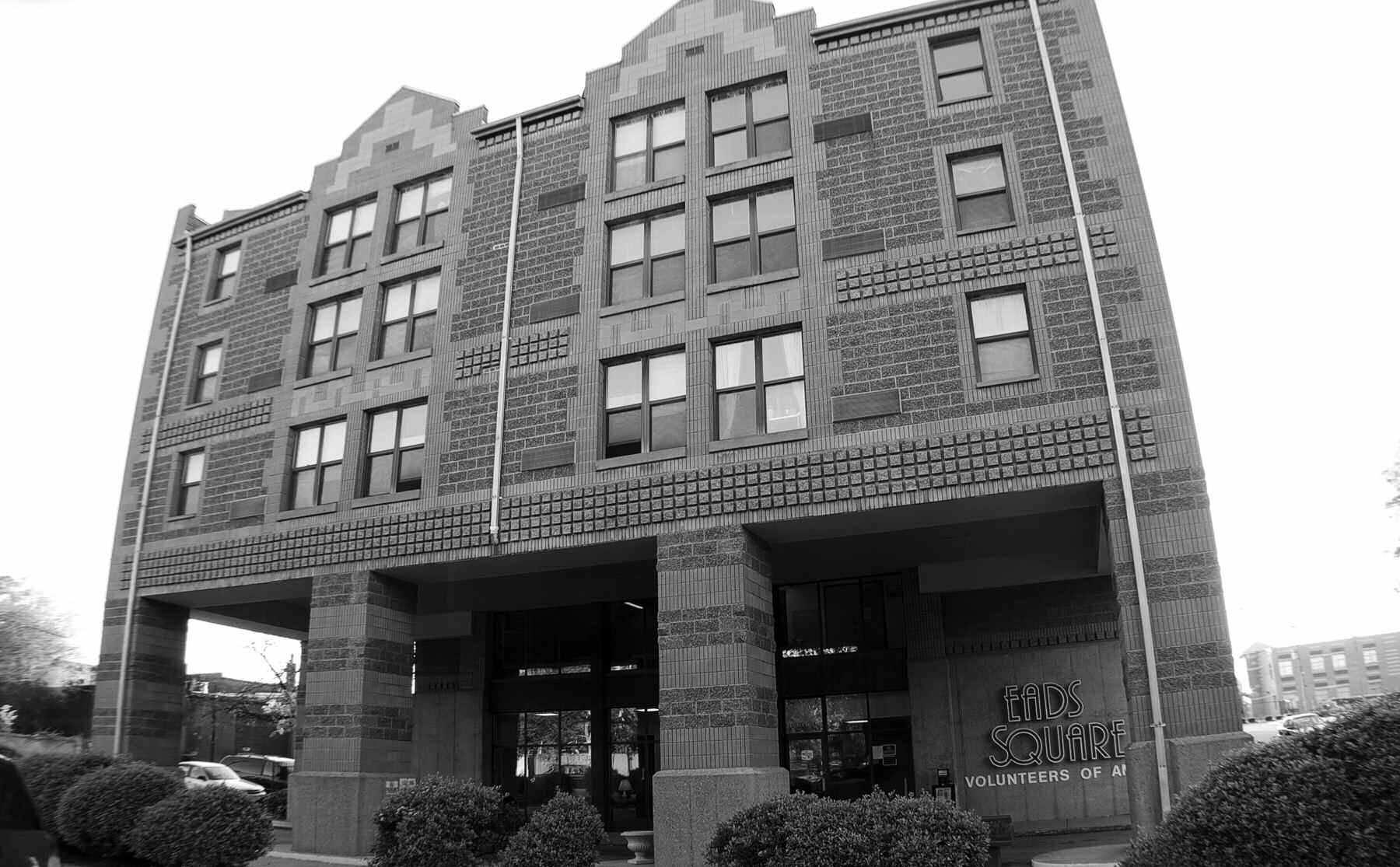






















Ashanti, her sister Kenashia and mother Ms. Tina joined LooseCannon S.L.I.M. Slo and Young Money’s DJ Stevie J in VIP for the State of Emergency 3 Official After Party Sunday night at The Marquee.


Young Leaders is here. If you are reading this hot off the press – and by that I mean early Thursday –put a pin in Partyline and get yourself together so you can be amongst the our region’s future (and current) rising stars at the St. Louis American Foundation’s 6th Annual Salute To Young Leaders Awards and Networking Reception. You won’t be sorry – and anybody who has ever been will co-sign my promise. The roads are clear (I’m claimin’ it) – and that “sneakem” snow storm actually means that you can show off your designer snow boots with your power suits. Listen, I go every single year –and even if I weren’t partial to the paper I would still say that this is the don’t miss event for the ultraambitious folks who seek to mingle. Come out and congratulate twenty amazing people who didn’t wait until they got 40 to start getting big things done. It’s all happening tonight (Thurs., Feb. 25, 5:30 p.m.) at The Four Seasons. Call (314) 533-8000 to see if any scattered tickets remain.
Right on time for Bun B. The one week I finally call myself gettin’ hip to the game and coming right on time for the Marquee’s other side of midnight Friday night musicals, I almost missed my boy Bun B bless the stage. I mean had I arrived a moment later than I did, I would have watched him turn in as opposed to turn up. Bun B got it all the way in though. And the club was on lean while he was doing it too. I haven’t felt so at home in my age group since 8Ball and MJG came through. It was an all-around win. Perhaps they should get rappers of certain age who don’t like to rap past their bedtime.
Feeling the love for the Flint water drive. I don’t have to tell you that it’s quite rare that I get raw emotional out here in these streets, but I almost got choked up after watching the community respond to the water drive for Flint last Saturday by Project Compassion NFP, Radio One St. Louis, The Korey Johnson Foundation and Beyond Limit. When I tell you that the folks came through for Flint, you would have to see it to believe it. They all worked together as a well-oiled machine out there getting that water. Donors would pull up and the volunteers would snatch the water up and they would pull off and make room for the next one. That line was longer than Mickey D’s during the buy one get one Filet O Fish promotion. It was so refreshing to see our city pay it forward to Flint –and to see everybody roll their sleeves up and respond to taking in the overwhelming amount of donations that came in – I’m talkin’ racks on racks of cases. For those of you who didn’t get to stop through to donate, you can most certainly lend a hand to the pack and load team this Saturday (Feb 27) starting at 8 a.m. at the Dellwood Rec Center, 10266 W Florissant Ave
Late of Emergency. Now I must admit that I was beyond bothered by having to sit tight for the better part of two hours for the LooseCannon State of Emergency 3 show to get crackin Sunday night at Chaifetz. The young folks didn’t seem to mind nearly as much. Aside from the layover, the show was actually pretty tight. Between 2 Chainz, Jeezy and Yo Gotti everybody did their thing. Now I don’t know what Gotti did to get his favor as the Trap king in residence, but he has St. Louis on lock! In all fairness, he did put on the best show. S.L.I.M. put on his petty pants and brought Ashanti on to sing two songs while they held hands like they were strolling through Forest Park on Valentine’s Day. Actually, Ashanti was dressed as a cherry covered chocolate in her hot red cat suit with mesh sides. The stunt set the urban blogs ablaze the next day. However, I was shocked that there wasn’t the typical social media civil war between him and Nelly. But back to the show. It was close to midnight, that that was no excuse for Lil Wayne to come out looking like a Fraggle Rock break dancer. The dudes sitting next to me were like “man this cat [Partyline edit] came out on stage in a nightgown and some stretch pants.” I cackled for the whole rest of his part of the show. I know they’re mortal enemies – and I do hate to say it – but Weezy has quietly (dis)morphed into Young Thug. It made me shed a single savage tear to see him on stage like that when I know he’s capable of. If someone told me even three years ago that Lil Wayne would be rapping with vocal tracks, I would’ve resisted the urge to slap their face. But his um, let’s just say interesting performance was but a speck on an otherwise solid show. Wayne forgot that LA4$$ was to close the show so he told everyone to drive safe, which was unfortunate. At least LA’s fan base stayed put for his set.
SOE: The after party. You would have thought it was a national holiday the way the folks punched from the Chaifetz right over to the Marquee and stayed put for two solid hours. I was not ready – ask anyone who caught me in that state of fatigue where you’re so sleepy that your body knows not to nod off or it will be a wrap – so it resorts to delirious chatter and manic Kanye West behavior. I’d say that it was worth it to see the folks turn up for round two…and catch the second round of shots that S.L.I.M. was firing by being perched in VIP with Ashanti and her whole family. Oh, and Lil Wayne came through and kicked it too.
SOE 314. The last half of Partyline probably seems like the LooseCannon edition. Hey, at least I’m consistent. And I might as well keep it going by telling y’all that he has some major moves in store for 314 Day (a.k.a. March 14). A reliable source told me that because logistics wouldn’t allow for the locals to get their true time to shine, S.L.I.M. and ‘nem are putting on a major for $3.14 featuring rising local and national rap acts – starring LA4$$ and Lil. St. Louis I’ll be sure to keep you posted, and y’all need to try to keep your schedules clear.







U.S. Rep. Robin Kelly: the ‘Statute of Liberty for the Labor Movement’
American staff
February 19 marked the one-year anniversary of when President Obama signed a proclamation establishing the Pullman National Monument in the Pullman District.
The Pullman Historic District is located in the Pullman neighborhood on the South Side of Chicago and encompasses iconic sites in African American and labor history. The district was home to the Pullman Palace Railcar Co. and surrounding
See PULLMAN, D4

The Clocktower Building, part of The Pullman Historic District in Chicago
American staff
The Smithsonian’s National Museum of American History has added more than 20 objects to the national collections, including a Little Rock Central High School year book, a graduation dress, a personal letter from President Dwight D. Eisenhower, a notice of suspension and photographs, from Minnijean Brown Trickey, who is known as one of the Little Rock Nine.
A selection of these objects went on view February 8 through May 8 in the museum’s “American Stories” exhibition.
As a 15-year-old girl, Trickey was one of nine African American students who desegregated the Little Rock, Ark., high school in 1957, three years after the U.S. Supreme Court ruled segregated schools were unconstitutional in the 1954 landmark Brown v. Board of Education case. Objects on view include Trickey’s 1958 suspension notice from Little Rock Central High School, the school’s 50-year commemoration program, her 2012 Soul of Humanity Award

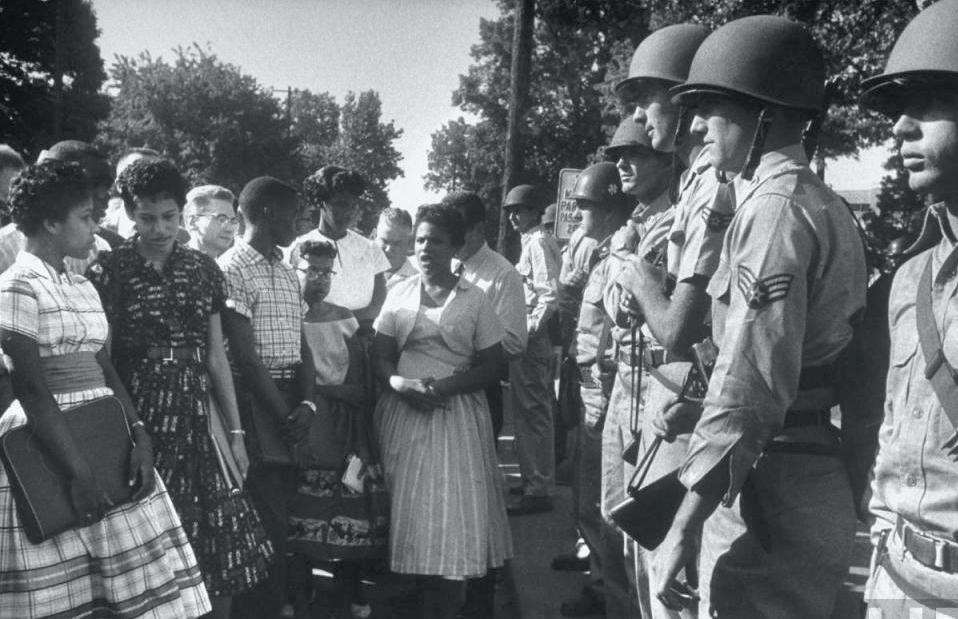
When nine African American students arrived at Central High School in Little Rock on the first day of school in 1957, they were met by the Arkansas National Guard, who on the governor’s orders, prevented them from entering.
bestowed by the Little Rock Central High School National Historic Site, a copy of Life magazine, a 1958 photo and the white graduation dress she designed along with the accompanying New Lincoln School commencement program.
Trickey completed her secondary education at the progressive New York school in Manhattan in 1959 after she was expelled from the Little
Rock school in 1958.
When nine African-American students arrived at Central High School on the first day of school in 1957, they were met by the Arkansas National Guard, who on the governor’s orders, prevented them from entering. Eisenhower intervened, and
See NINE, D3
American staff
When listening to Clifton Kinnie of St. Louis talk about his passion and work surrounding community activism, he seems like someone beyond his years.
“When I saw Michael Brown’s body lying in the streets, I knew something was fundamentally and systematically wrong in this country,” said the 18-year-old Kinnie, who has been profiled nationally for his organizational and community activism. His efforts has garnered the attention from civil rights enthusiasts around the country
and resulted in him being the first young person to receive the Ambassador Andrew Young Leadership Award for Distinguished Leadership.
The Leadership Award, named for the former U.S. Ambassador to the United Nations, Atlanta mayor and Georgia Congressman, is given to exemplary people whose giving, work and leadership have impacted the world.
Young presented Kinnie with the prize on January 13 at the National Youth Summit at the
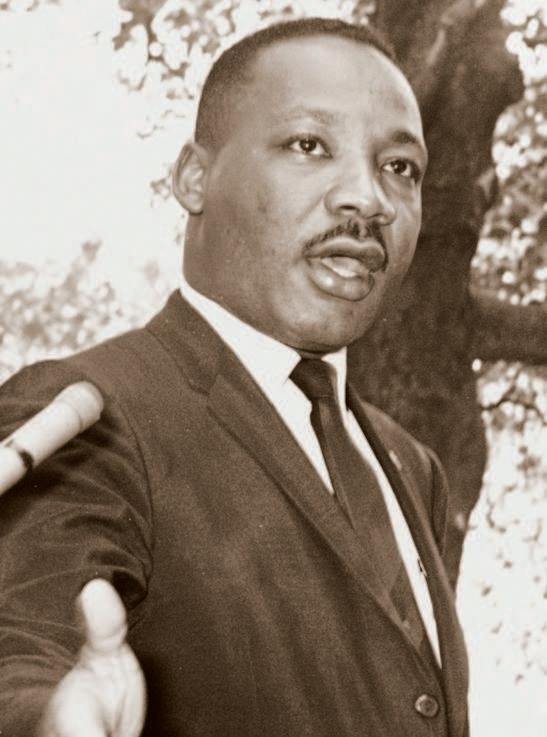
By Jason Q. Purnell Guest columnist
It is difficult to overstate the influence that Dr. Martin Luther King Jr. has had on my life, my thinking, and my work. If you opened my office door and turned on the light, you’d see a portrait of Dr. King against a backdrop of the American flag, with four little children, two black and two white, walking together in the foreground. It would not be entirely inaccurate to say that he watches over me in my labors – feeble and incomplete though they sometimes seem to me – to be a true and rightful heir to his dream and to help bring some portion of it into reality.
n I’m following the call of Martin Luther King Jr. to tell the truth, and of his father, the Reverend Martin Luther King Sr., to “make it plain.”
I spent my younger years nearly obsessed with this great man, whose death preceded my own birth by eight years. My only access to him was through film footage, audio recordings, books and interviews. And I have pored over them all, including the 2,306 pages of Taylor Branch’s masterful biographical trilogy. I am a student of King, and devoted one. So, I could regale you with obscure factoids and the microscopic details of his life and work. Instead, I’m following the call of Martin Luther King Jr. to tell the truth, and of his father, the Reverend Martin Luther King Sr., to “make it plain.”
Now, truth is a tricky thing in a university. The modern academy bristles at claims to final and universal truth, even as its daily endeavors seek closer and closer approximations of reality through research and criticism, scholarship and instruction. So, I want to provide some precision about the kind of truth I mean.
I take my meaning from what has been called the only truly American school of philosophy that emerged in the late 19th century and is most closely associated with William James. It is a philosophy called pragmatism. And here I beg my philosophy colleagues’ collective pardon with this oversimplification of its chief insight; namely, that those ideas are true which have shown themselves to work. Or as James put it, in question form, “What difference would it practically make to anyone if this notion rather than that notion were true?”
I can think of no better philosophical frame for reflections on the meaning of Dr. King for our current moment, when we have so little use for things that are not evidence-based and
tested by experience. What can King teach us that makes a practical difference and is, therefore, true?
It turns out, quite a lot. But three truths drawn from his life and work seem to me most useful for us at this time of uncommon change and opportunity here in St. Louis and throughout the nation. They are not only truths, they are virtues.
It is King at his most vulnerable where the first of these virtues is best found for me. In a sermon delivered several years after he appeared on the national stage as the leader of the Montgomery bus boycott, King reflects on the first 25 years of his life. He recalls that they were happy and comfortable years in which he enjoyed the love and support of his mother and father and had all of his needs met. But King’s involvement in the boycott changed all of that. He was under intense pressure and scrutiny and receiving more than 40 phone calls a day threatening his life and the lives of his wife and young daughter.
And one night in particular, around this time of year in January 1956 – and meaningfully for King, around midnight – he got just such a call during which the caller said, “If you aren’t out of this town in three days, we’re going to blow your brains out and blow up your house.”
It shook King to his core for reasons he could not fully comprehend. The 27-year-old King was thinking about giving up. He had to call on inner resources and have an authentic encounter with a deeper truth. He sat at his kitchen table and prayed aloud for strength.
“Lord, I’m down here trying to do what’s right. I think I’m right. I think the cause that we represent is right. But Lord, I must confess that I’m weak now. I’m faltering. I’m losing my courage.” And he heard an inner voice saying to him, “Stand up for righteousness. Stand up for justice. Stand up

for truth. And lo, I will be with you, even until the end of the world.”
That was a turning point for King, and it illustrates the truth and the virtue of faith. In a world that allows our children to die, whether immediately by bullets or beatings or bombings or more slowly by poverty and neglect, we must believe in something. Black lives do matter. I cannot fully tell you how dearly they do, though I have been trying to, not just for the sake of black folks but for the sake of us all. But slogans alone will not sustain us in these times. It is faith which must support our work. And I am not talking exclusively of Christian faith or even religious faith, though if you attempt to wash away the centrality of JudeoChristian ethics from the story of King and the ordinary women and men and children who propelled the Civil Rights Movement, you will have missed the mark by an exceedingly wide margin. What I mean is faith in something. Even King had more than Christian faith.
He believed in the founding principles of this country, however seemingly elusive, in freedom, equality, justice and democracy. It was not mere rhetorical flourish that had him so often referencing the Declaration of Independence and the Constitution or songs like “My Country ‘Tis of Thee.” After a Christian, King was an American, a black American, with all the tortured tension of that status, but an American fundamentally. And it was faith that allowed a 27-year-old – not much older than the young people arrayed on West Florissant some months ago – to continue to lead the people of Montgomery in a boycott that lasted 381 days. And as we reflect on the death of another one of our children, Michael Brown Jr., as we work to make St. Louis a place of equity and justice, we would do well to rely on faith. For the dark past has most certainly shown us that it works. But not only faith. The next virtue is highlighted in another of King’s most vulnerable moments, the night before his
death. In what has become known as the “Mountaintop” speech, King reflects with eerie prescience on his mortality and the meaning of his life. It is the final lines that have stuck with me since I was a young boy:
“We’ve got some difficult days ahead. But it really doesn’t matter with me now. Because I’ve been to the mountaintop … Like anybody, I would like to live a long life. Longevity has its place. But I’m not concerned about that now. I just want to do God’s will. And He’s allowed me to go up to the mountaintop. And I’ve looked over. And I’ve seen the Promised Land. I may not get there with you. But I want you to know tonight, that we as a people will get to the Promised Land. So, I’m happy tonight. I’m not worried about anything. I’m not fearing any man. Mine eyes have seen the glory of the coming of the Lord.”
And here, in poignant allusion to the conclusion of the biblical Exodus story, we see through King the virtue of hope. Hope, in this sense, is not merely wishing that things will

turn out well. It is believing as King said elsewhere, that the “arc of the moral universe is long, but it bends towards justice” or that “unarmed truth and unconditional love will have the final word in reality.”
Hope is a certainty about the ultimate prevailing of the just, the right, and the good.
And without it, we humans can find very little reason to go on. It is no coincidence that hopelessness is one of the prime characteristics of clinical depression, for despair is the polar opposite of hope.
And so we must have hope, especially in what may seem like desperate times.
There is too little talk of the world we hope for amid the justified complaints about the world we have. We fall too easily into cynicism and the deadening inertia that attends it. Righteous indignation may set the initial spark among a few, but enduring flames of change burn on hope. If we wish our efforts to be joined by more than just the preached-to choir, it falls on us to say and to show just how much better things can be if we give every person in our community the opportunity to flourish, if we truly lived as if every life mattered. That story must be told vividly and repeatedly. We know with certainty the difference in practical terms that hope has made in the world.
The final virtue isn’t encapsulated in a single sermon or speech of King’s. It is shot through his entire public life and ministry. It is, of course, love.
King says in his eulogy to the young girls killed in the bombing of the Sixteenth Street Baptist Church in Birmingham that the kind of radical love called for by Jesus Christ in his Sermon on the Mount is the hardest admonition of his to follow. It is an admonition that will be familiar to many: “Love your enemies, bless them that curse you, do good to them that hate you, and pray for them that despitefully use you, and persecute you.”
As much as the inspiration from Mahatma Gandhi, these are the words that undergirded King’s consistent commitment to nonviolence. Love is what
our moment calls for, and there is ample evidence that love in action works. It is important to distinguish the kind of love we’re talking about here from the love of romance or friendship. This love, captured by the Greek word “agape,” is a kind of all-encompassing, nondiscriminating love, and at its heart is the recognition of our fundamental connection to one another and to all that exists in the world. If that sounds like so much soft-headed nonsense to some of us in 2016, rest assured that it did not enjoy universal appeal in 1956 or 1967 or two millennia ago either. But then consider the alternative: If you bomb our nation, we will invade yours, inspiring the next group of people who will bomb our nation, whom we will vow to wipe off the face of the earth, and the cycle goes on and on and on.
Violent retaliation, however justified it may seem, has never solved a thing – it has at best postponed the inevitable suffering of the retaliator, even as it inflicts immediate suffering on the one retaliated against. This is as true in the streets of St. Louis as it is on the global stage. Love is the only thing that interrupts this cycle of insanity. “Darkness cannot drive out darkness,” King quite famously said. “Only light can do that. Hate cannot drive out hate,” he continues, “only love can do that.” If that is not the truth, if it does not make the most practical difference of all, I do not know what does. What we do in hate and anger, however righteous, however justified, cannot ultimately live; it will not fix what was broken, but only add to the brokenness and give strength to the darkness. For our work to work, we must have love.
Edited for length from remarks made at the 29th Annual Dr. Martin Luther King, Jr. Commemorative Celebration at Washington University in St. Louis in Graham Chapel on January 18, 2016.
Shows need for Congress to act on economic issues facing black community
In recognition of Black History Month, the Joint Economic Committee (JEC) and the Congressional Black Caucus (CBC) released an update to their 2015 report on the economic status of African Americans. The study finds that African Americans lag far behind white Americans in almost every measure of economic well-being in all 50 states.
“During Black History Month our nation celebrates the extraordinary achievements of African Americans,” CBC Chairman G. K. Butterfield and JEC Ranking Democrat Carolyn B. Maloney said in a joint statement. “Our country has come a long way, and African Americans have made significant economic progress since the passage of the Civil Rights Act of 1964, but so much more work remains ahead. We’ll never eliminate economic disparities based on race if Congress continues to ignore the issues facing the black community.”
Key findings of the report include:
• The African-American unemployment rate (8.8
percent) is more than twice the rate for white Americans (4.3 percent).
• African Americans are twice as likely to live in poverty as whites – 26.2 percent compared to 12.7 percent.
• The median income of African-American households is $35,400 – nearly $25,000 less than the median income of white households ($60,300).
• The median net worth of white households is 13 times greater than that of black households ($142,000 vs. $11,000).
• Among those aged 25 and older, 36 percent of white Americans hold Bachelor’s degrees or higher compared to 22 percent of African Americans.
The JEC report also contains a chart that shows large differences between black and white unemployment over time, as well as a chart that compares median income for different races and ethnicities since 1980. View the report at http:// www.jec.senate.gov/public/_
The AFL-CIO and the Coalition of Black Trade Unionists (CBTU) will host a symposium on the report
“A Future of Workers: A Contribution from Black Labor” to commemorate Black History Month 4-7
p.m. Saturday, February 27 at Laborers’ International Union of North America, Local 42 Union Hall, 301 S. Ewing. Fred Redmond, national AFL-CIO vice president and A. Philip Randolph Institute chairman, will serve as moderator. He also co-authored the report. Other participants includes Lew Moye (CBTU), Jamala Rogers (OBS), Mary Armstrong (AFT Local 420) and Denise Lieberman (Advancement Project).
Continued from D1
the students entered the school September 25, three weeks after the start of the school year.
“These objects tell a rich and significant American education and civil rights story,” said Margaret Salazar-Porzio, a curator in the museum’s home and community life division. “Minnijean’s donation provides texture to the experience of integration and segregation in the American South.”
To thwart desegregation, Little Rock closed its four public high schools from 1958 to 1959 and it was a lost year for most students.
Trickey, whose donation

Fred Redmond, national AFL-CIO vice president
In 2015, leaders from black labor groups came together to develop a plan for a fresh perspective on how to advance the labor movement
includes both a letter of thanks from Eisenhower to her parents in appreciation for her integrating the school and her suspension notice, was subsequently expelled from the high school. She was welcomed into the family of psychologists, Kenneth and Mamie Clark and was able to graduate from New Lincoln School in 1959.
Like Trickey, some students had to move in with family or friends to continue their schooling while others joined the military or sought employment without graduating.
Trickey, the eldest of four children of Willie and Imogene Brown, was born September 11, 1941, in Little Rock. Her mother was a homemaker and nurse’s aide, and her father was an independent mason
that focuses on power over grievances , and connecting with workers around issues they can care about-such as criminal justice, workplace discrimination, education and wages. The result was “A Future of Workers: A Contribution from Black Labor.”
The symposium, which will include a light dinner, will begin with a discussion from labor leaders who have been successful at organizing workers of color through this lens. After the discussion, the group will work together to develop action steps to bring communities of color closer to the labor movement.
RSVP to lewcbtu@aol.com; space is limited.
and landscaping contractor.
Members of the Little Rock Nine were awarded the Congressional Gold Medal by President Bill Clinton in 1999.
Other Little Rock Nine objects in the museum’s education collections, which are housed in the Division of Home and Community Life, include two report cards and a certificate from Terrance Roberts, who was another of the nine students. The museum is located on Constitution Avenue, between 12th and 14th streets N.W., and is open daily from 10 a.m. to 5:30 p.m. (closed Dec. 25). Admission is free. For Smithsonian information, the public may call (202) 633-1000 or visit http://americanhistory. si.edu.
Continued from D1
John F. Kennedy Center for the Performing Arts in Washington, D.C.
Kinnie was nominated for the award by Tony Neal, president/CEO of Educational Equity Consultants in St. Louis and a board member of The Ethics Project. The Ethics Project of St. Louis convened the National Youth Summit. It exists to “improve the well-being of our youth and strengthen our community by addressing the impact of crime, incarceration and injustice on children, families and the community as a whole.” Christi Griffin is the founder and president of The Ethics Project.
“I was so humbled to receive the award,” said Kinnie. “I have to use this platform for justice, to uplift young people, and there is no turning back.”
The activist is in his second semester as a freshman at Howard University, courtesy of a service scholarship, and is majoring in political science.
He is also an intern at the Aspen Institute in Washington, D.C. The Institute is an educational and policy studies organization that promotes leadership for those grappling with critical issues.
The days following Brown’s shooting death by Ferguson Police Officer Darren Wilson, protests erupted in St. Louis and around the world.
“I felt angry, frustrated and sick and tired,” Kinnie said, whose Twitter handle is @ CliftonKinnie. “It’s scary to know that we live in a world where police are not held accountable, but other professions are. It made me want to fight back.”
“My fight started in the streets of Ferguson,” Kinnie added. “I became a leader in the Ferguson protest movement. When we stood up for ourselves in the streets of Ferguson, we got tear gassed and shot with rubber bullets.”
Then, adding to Kinnie’s
fury was a remark made by a teacher at his high school.
“A teacher said they need to stop the looting and the uprising,” he said, “but I said that many young people were disenchanted. I don’t have to condone the violence to understand that a community is in pain, because there was a great injustice done.”
After the instructor’s remark, Kinnie contacted approximately 20 of his friends and told them to meet at his house that night for a rally. More than 50 young people showed up.
Kinnie founded Our Destiny Coalition STL in August 2014, which is a network of high school student activists. The coalition conducts community
n “We don’t protest because we don’t like America. We protest, because we love America.”
– Clifton Kinnie
service, voter registration drives and protests in and outside of high schools against such issues as the school to prison pipeline.
“The police killed more than 1,000 people last year. The police are not supposed to occupy forces, they are supposed to protect and serve,” Kinnie said. “It’s the wrong idea that the answer for the black community is more police and prisons instead of education and business investments, which is what is available in the white community.”
“We have to rethink what constitutes safety in black communities in contrast to white communities, where there are better jobs, infrastructure and housing,” he added.
Kinnie’s activism, he said, is a legacy to his mother, who was a social worker.
The teen grew up in Spanish Lake, minutes away
from Ferguson, and went to Hazelwood East High School for one year before transferring to the private Lutheran High School North. Kinnie graduated in May 2015 with a 3.5 grade point average. Along the way, Kinnie had to adjust and deal with lifealtering factors with his parents. Kinnie’s father suffered a stroke and was moved to a nursing home when he was a freshman in high school.
“I am the oldest son and one of eight children,” he said.
“I had to grow up quick and become a man and mold myself in this misogynistic world.”
Kinnie’s mother, who was diagnosed with stage four breast cancer in 2005, died in July 2014, but not before she went back to school to receive her associate’s degree in social work in 2012. Kinnie’s mother also raised all of her children to stick together and form a “chain.” She preached that when one link was weak, it impacted the whole “chain.”
“I wouldn’t be able to do what I’m doing now if it wasn’t for the love and support of my siblings,” said Kinnie. “We love each other and stick together.”
What exactly he will be doing later in life, Kinnie said he doesn’t quite know. “I’m evolving as an organizer, activist and leader in the movement. But for now I’m focused on empowering youth, continuing to tell my story and letting young people know it is OK to tell their stories, and to fight for what is right.”
Protesting is not negative and protestors are not trouble makers, the teen emphasized.
“We don’t protest because we don’t like America,” he said. “We protest, because we love America, and we believe we can live in a country where opportunity is not by chance, choice, where you live or what you look like.”
“We protest, because we believe we can live in a nation that can do better for all its people,” Kinnie said. “We protest, because we believe in a world where police do not kill people.”

America’s health care needs are evolving, and so is the role of the pharmacist. Our graduates are playing increasingly critical roles on health care teams to achieve better patient outcomes while driving down costs.


Dr. Lucille Constance Gunning was born in 1922, in New York City. When Lucille was only five years old she witnessed a tragedy. Her aunt was a midwife and was helping with the birth of a baby. Complications caused the family to seek out a doctor, who sadly arrived too late to save the newborn. At that moment,
Lucille decided that she never again wanted to feel helpless and just witness a family’s heartbreak. She wanted to be trained to help.
Lucille spent much of her childhood in Jamaica and graduated high school there. When World War II broke out, her parents summoned her back to New York to continue her education.
As Dr. Gunning laughingly recalls,
“I was too stupid to realize that it wouldn’t be easy to become a doctor as an African-American woman.” However, she heard that New York University had opened its doors to both African-American and female pre-med students. She went on to earn her medical degree from the Women’s Medical College of Pennsylvania.
After graduation, Dr. Gunning opened her own private practice, with a focus on pediatrics, specifically helping children with a history of abuse and special needs and she dedicated her life to this field.

Dr. Gunning is a published and respected physician and has presented nationally and internationally on pediatrics and pediatric rehabilitation, child abuse and substance abuse. Her expertise has been used in pediatric rehabilitation research and impacts the improved treatment of special needs children today.

The first nationwide labor strike in 1894 led to a confrontation between strikers and U.S. Army troops, leaving 30 people dead.
Continued from D1
company town built by George Pullman.
This was the site of the first nationwide labor strike in 1894, which led to a confrontation between strikers and U.S. Army troops, leaving 30 people dead. This strike led to the establishment of Labor Day as a national holiday.
The area was also the birthplace of the first AfricanAmerican labor union, The Brotherhood of Sleeping Car Porters.
The Pullman Historic District includes the Clocktower Building, the Hotel
Florence, Greenstone Church, and dozens of historic
n The area was the birthplace of the irst African-American labor union, The Brotherhood of Sleeping Car Porters.
U.S. Rep. Robin Kelly (D-Chicago) referred to the Pullman National Monument as the “Statute of Liberty for the Labor Movement.”
“The Pullman National
Monument will be the crown jewel of the community, a remarkable achievement made possible only through the cooperation and collaboration of leaders from the public and private sectors and the residents of the neighborhood.” Kelly said.
“Thank you to all of the stakeholders for your hard work and dedication, and to President Obama for making February 19, 2015 such a memorable day. Together, we have preserved the legacy of Pullman, and the vital role that it played in our nation’s labor and civil rights history will endure for generations to come.”


